Francesca and Henk-Jan's Backpacking Trip!
Monday, August 30, 2010
The Ancient City Of Bhaktapur
After talking to reception Francesca and I decided to visit Bhaktapur, one of the three medieval city states in the Kathmandu Valley, on the 30th of August. Hiring a taxi to take us there, wait for us, and take us back was easily cheap enough to make for a reliable solution for daytrips. A kind man drove us around in his tiny car, taking us away from the hustle-bustle of the center and into the quiet streets of Bhaktapur.
Bhaktapur, literally meaning “The Town of Devotees,” is believed to have existed from the early 9th century AD. It was the capital of the Kathmandu Valley from the twelfth century to the fourteenth century and then an independent kingdom until 1769, when the Shahs invaded. Bhaktapur was partially destroyed during the 1934 earthquake, but with the help of the Germans rebuilt and restored during the 1970s. Arriving at the ticket office we saw a vast square with lots of huge buildings and hoped the promised quietude would last.
A guide approached us after we had bought our tickets, offering to take us around for just a few dollars. Since we’re both inherently a little lazy this seemed fine to us and we followed the young man onto Durbar Square. The first thing he showed us was a pair of stone lions, erected by King Bhupatindra Malla in 1701. On either side stood statues of the terrible Bhairab, a wrathful incarnation of Shiva and of his companion Ugrachandi. Legend has it the sculptor lost his hands as a reward for crafting the masterpieces, to prevent him from ever duplicating them.
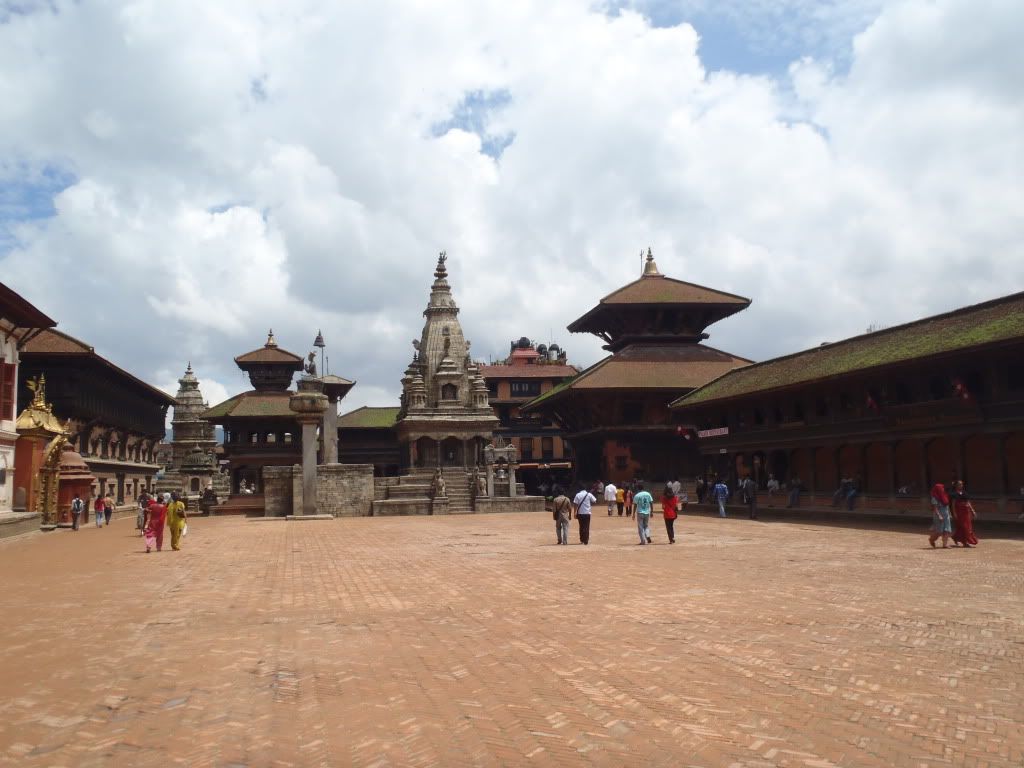
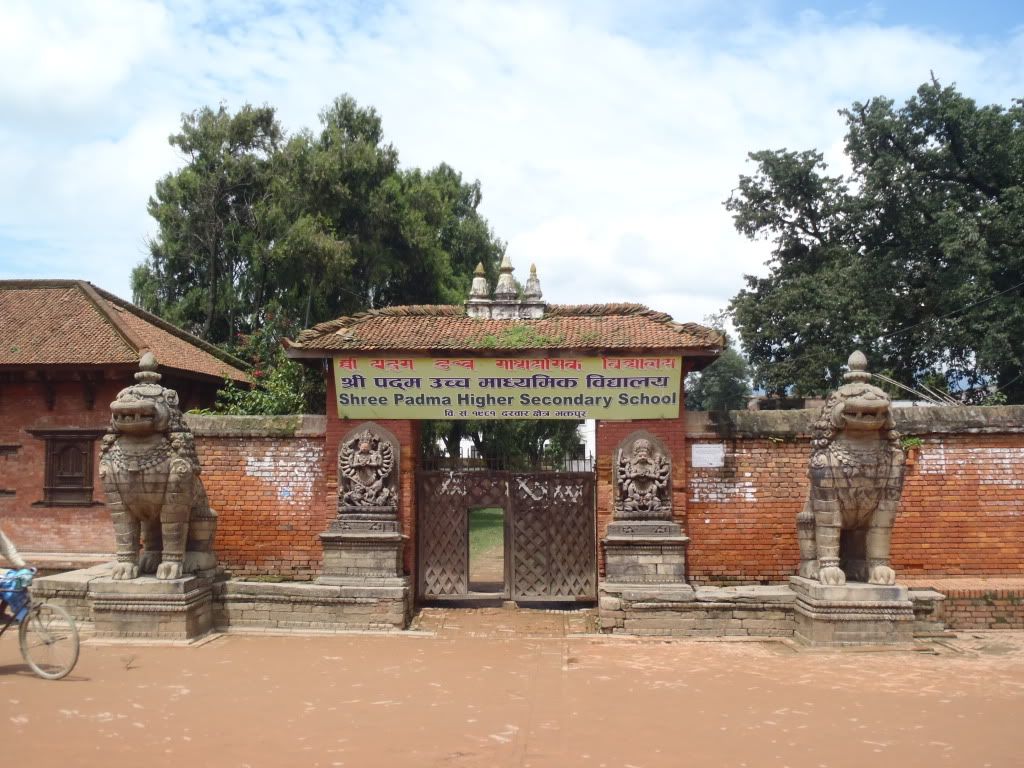
Just to the right of us our guide pointed out the Rameshwar and the Krishna Temple, which we had a quick look at. With the Royal Palace now appearing on our left Francesca and I were shown the much larger and much more impressive stone Vatsala Durga Temple, which was built by King Jagat Prakash Malla sometime in the 17th or 18th century. In front of the temple stand King Bhupatindra Malla’s Column, as well as the Taleju Bell, built by King Jaya Ranjit Malla in 1737 to mark morning and evening prayers at nearby Taleju Temple.
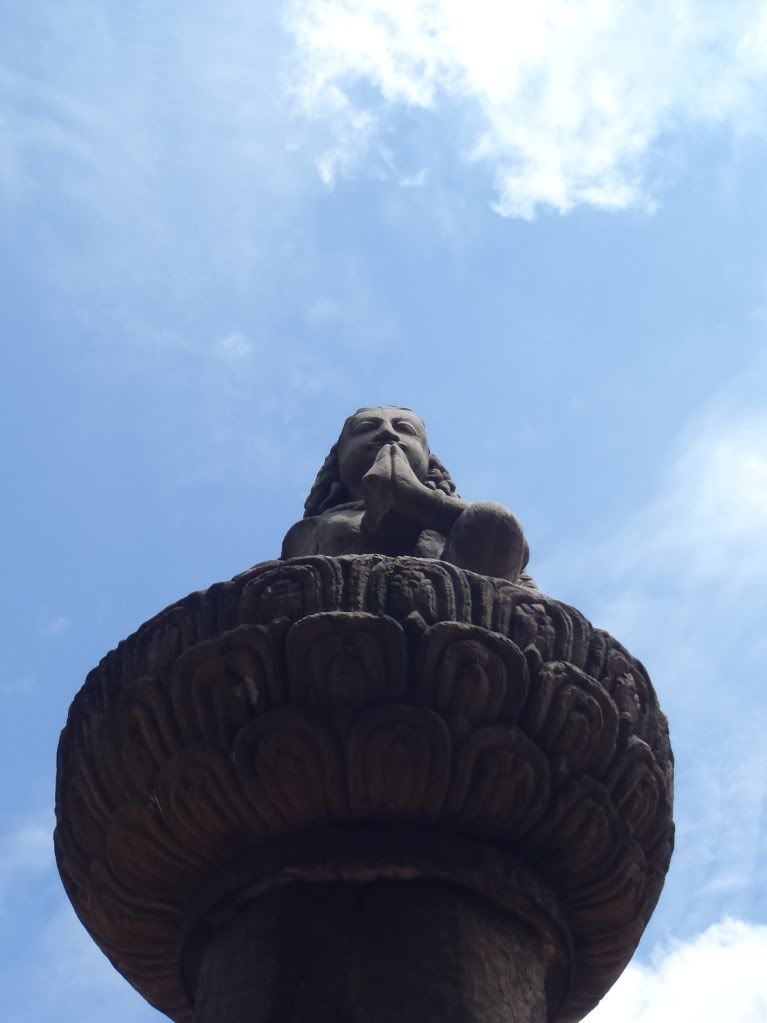
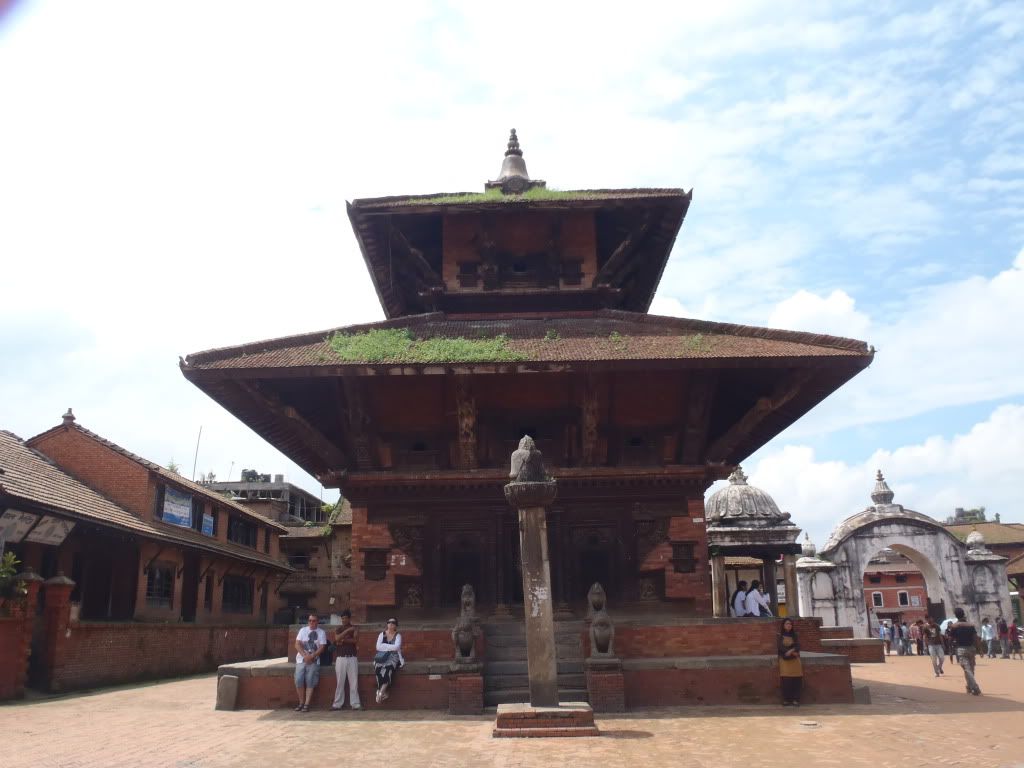
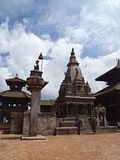
Before having a look at said temple our guide took us to the Royal Palace proper. The building itself is not open to inspection (other than the museum, which we’d visit later that day), but the Golden Gate (Sun Dhoka), the entrance to the 55 Window Palace looked fabulous. The frieze shows Hindu deities in great detail. After inspecting it, Francesca walked inside, first coming past ancient war drums, and had a look at 55 tiny windows peaking down at us from a relatively small courtyard. Apparently the King once housed his 55 wives in rooms overlooking the area. You’d start to wonder how he even got around to ruling his kingdom…

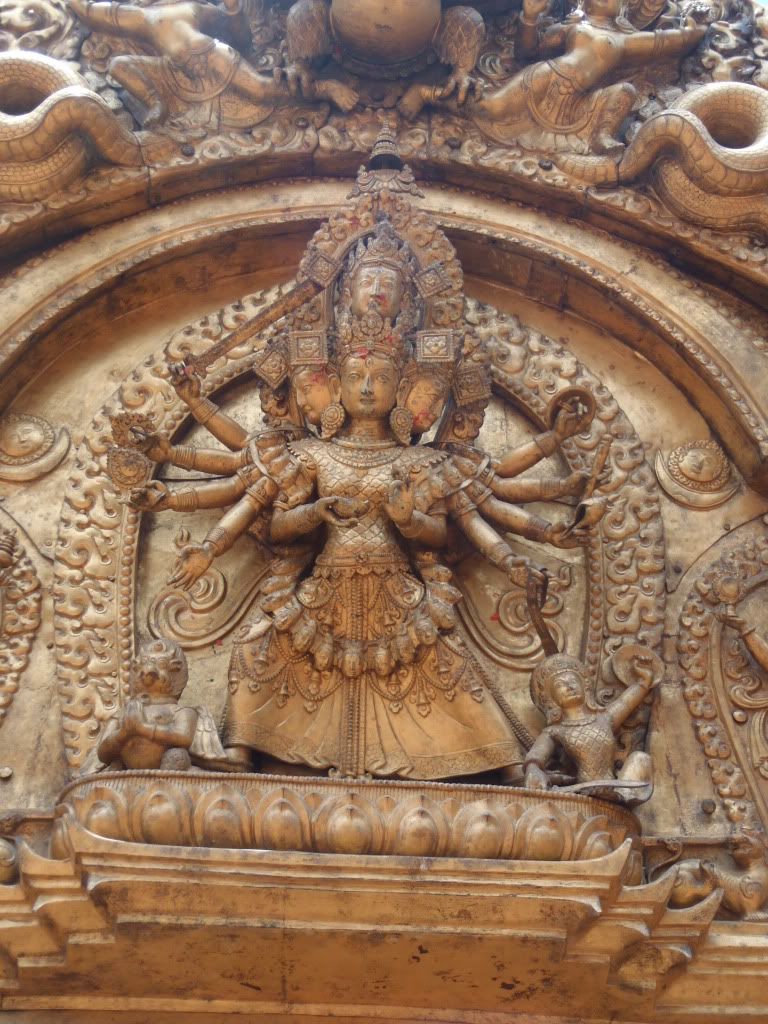
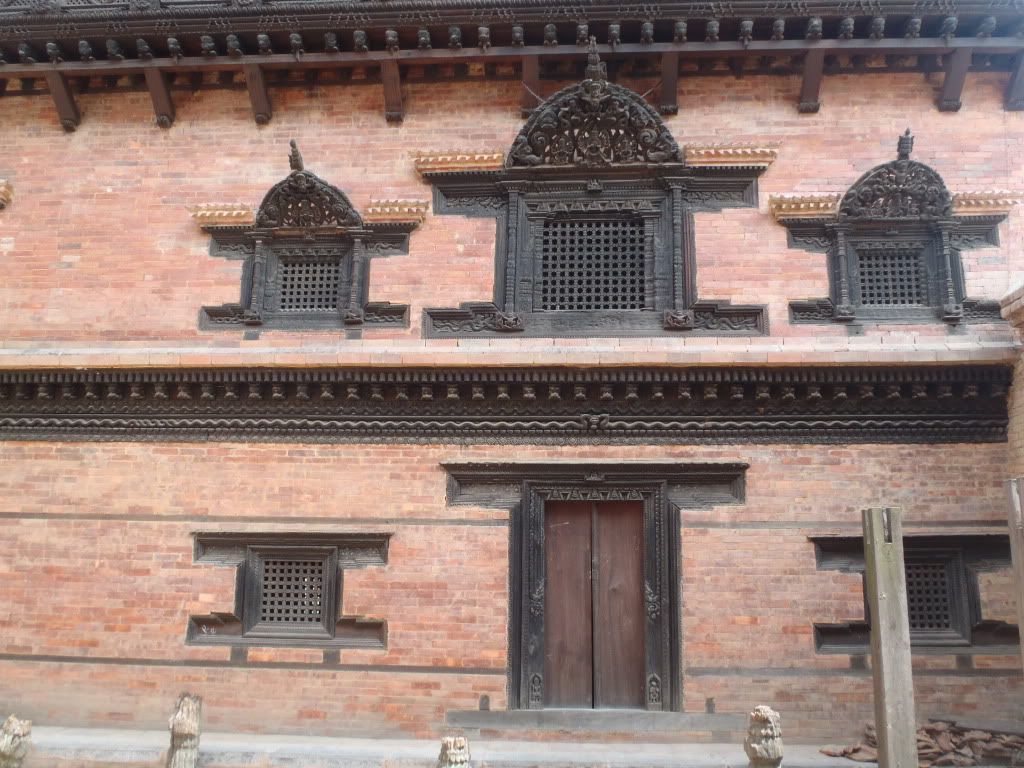
Further inside the Taleju Temple was off-limits to us non-Hindus, but we were able to have a look inside from the open door. Also part of the inner courtyards was the Naga Pokhari, a 17th century water tank. The pool is encircled by a stone cobra and inside the tank a cobra looks out at visitors. Being done with the Palace for now our guide led us to the Cyasilin Mandap, a small temple with a stone marker explaining in German how the Germans helped rebuild the square and its surroundings. Not very useful for people that don’t read German… Luckily I could translate it without problems! Behind it an old, dried up water tank looked sad it had lost the important role it once carried.
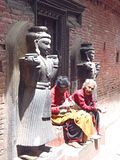
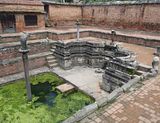
Behind the Vatsala Durga Temple, the Pashupatinath Temple is the oldest temple of the square. It was built in 1475 by King Yaksha Malla and is dedicated to Shiva’s incarnation Pashupati. The erotic roof carvings were quite a sight to behold. A little further away stood the 17th century Siddhi Lakshmi Temple, or Stone Temple. It has been built in the classic shikhara style from North India and the steps leading up to the temple proper have an interesting array of statues – they’re lined with male and female attendants, children and dogs, horses, rhinos, lions and camels. A sad looking pair of stone lions just a little in front of the Stone Temple are all that remains of a temple that was completely destroyed during the big earthquake. Finally, the bulky Fasidega Temple was built in honor of Shiva, with a large lingam inside.
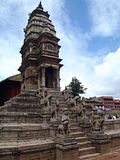
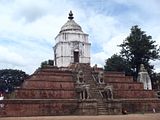
Walking a little ways off the square our guide now took us to a Mandala Shop. Here we learned everything about the creation of painted mandalas. Young recruits (often Tibetan) are carefully trained in the art, and slowly work their way to master status. It take several years before one can make mandalas so well that they look perfect and even then making one takes several days. We got to see several rooms where young people were destroying their eyes, peering at their canvases as they carefully applied the paint. Of course we were offered to buy something, and I must admit I was tempted, but over 100 dollars for a souvenir like that is just a little too much (if not a fair reflection of the craftsmanship, materials used and time invested).
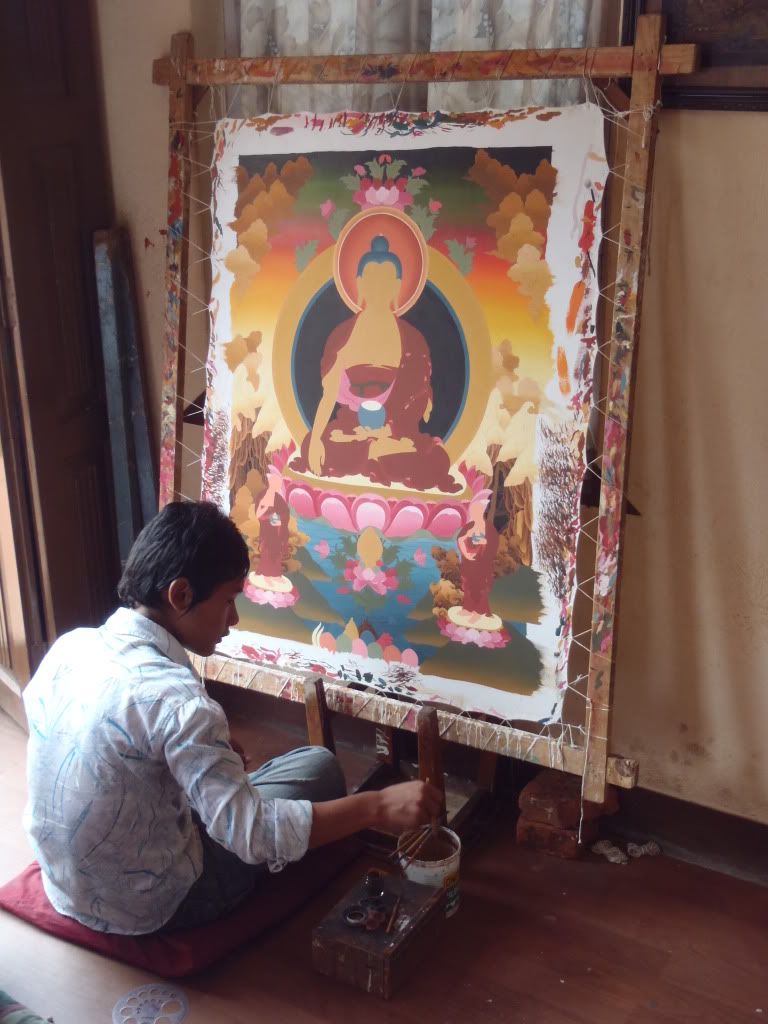
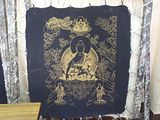
Our guide continued his walk, taking us around Tadhunchen Bahal, a Buddhist temple/monastery linked to the cult of the Kumari, a living goddess Francesca will later tell you much more about. An alleyway led us to Taumadhi Tole, the next square on the agenda. Before having a look at the temples here our guide pointed out a stack of chariot components, used every year for a massive tug-of-war between all the locals. The first building that stood out as we walked onto Taumadhi Tole was the enormous Nyatapola Temple. With five stories totaling a height of 30 meters this is the highest temple in all of Nepal. It was built in 1702 during the reign of Bhupatindra Malla and dedicated to Siddhi Lakshmi, a wrathful incarnation of Parvati. We learned that we weren’t allowed to see the idol of the goddess since she’s too scary to behold, leaving her in the caring hands of a few lucky priests.
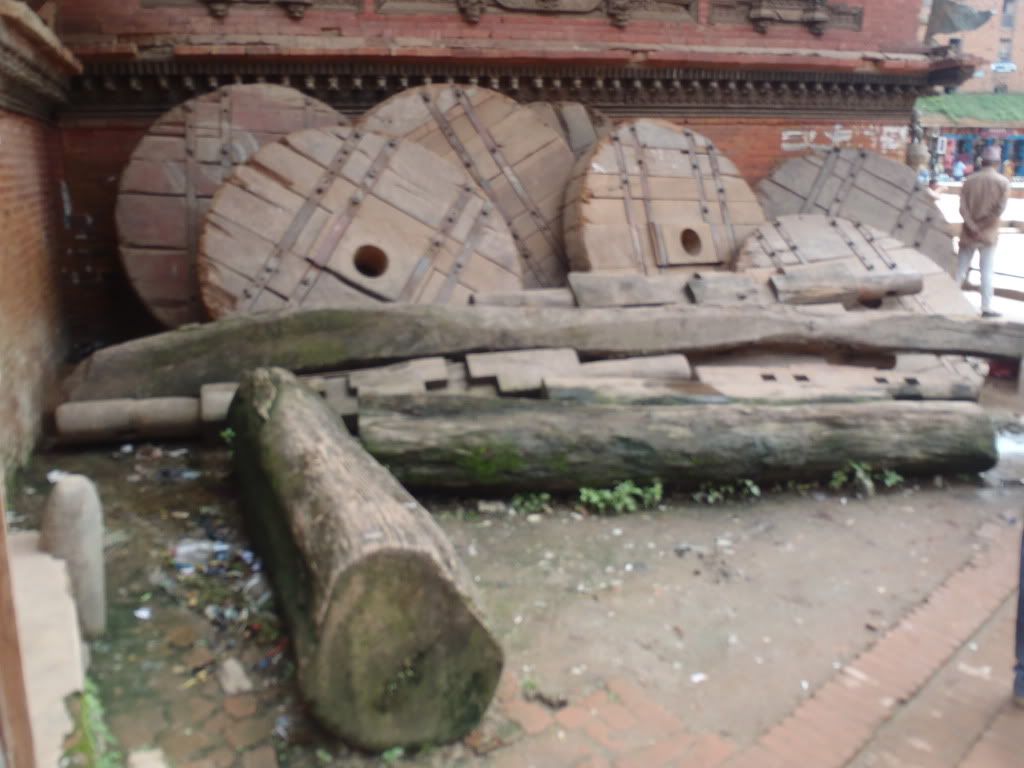
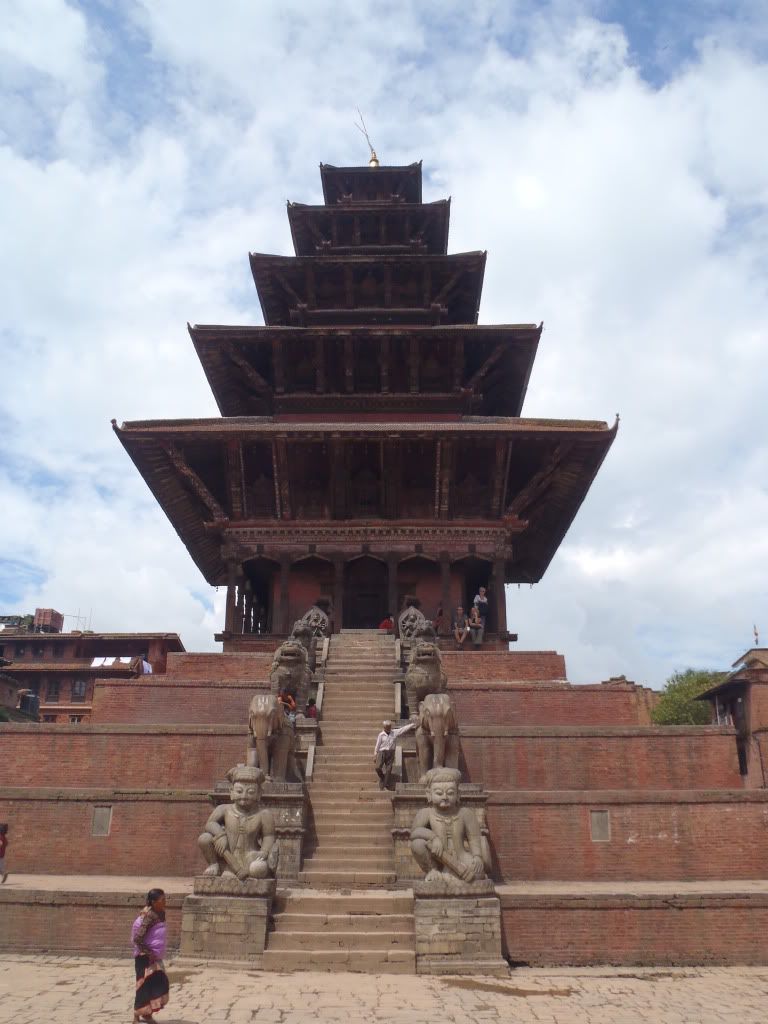
Also on the square is the much broader and lower Bhairabnath Temple, dedicated to Bhairab, the wrathful incarnation of Shiva. The original temple was a little too modest according to King Bhupatindra Malla as he decided to add an extra level in 1717. After the earthquake another storey was added as the entire thing had to be renovated. Our guide seemed to want to end our tour and walked us to Potters’ Square. It sure was aptly named with people making and selling pottery everywhere and pottery drying out in the sun all over it. We were not terribly interested in the pottery and followed our guide through a maze of narrow lanes back to Durbar Square. Of note were some terribly deformed walls, damaged and left standing after the earthquake.
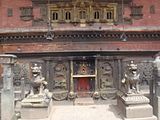
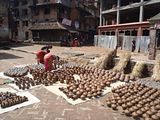
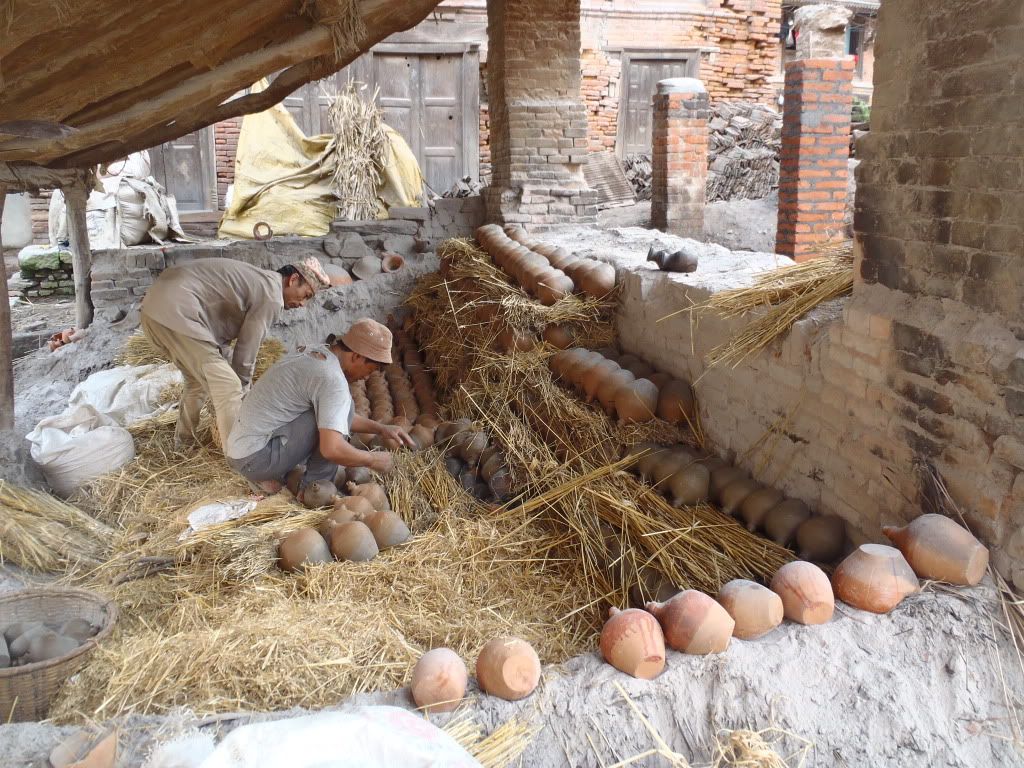
Back on Durbar Square we paid our guide and headed for the National Art Gallery. After paying a small sum we got to see an extensive collection of Tantric cloth paintings (similar to Tibetan thangkas), as well as palm-leaf manuscripts, and metal, stone and wooden votive objects. Furthermore, the walls were lined with paintings of all the Malla Kings. It was funny to see how they all looked so alike. The view of the square from inside the museum was worth it and being able to see the inside of the palace made it extra valuable.
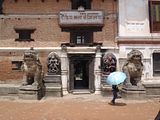
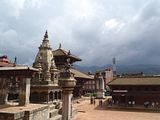
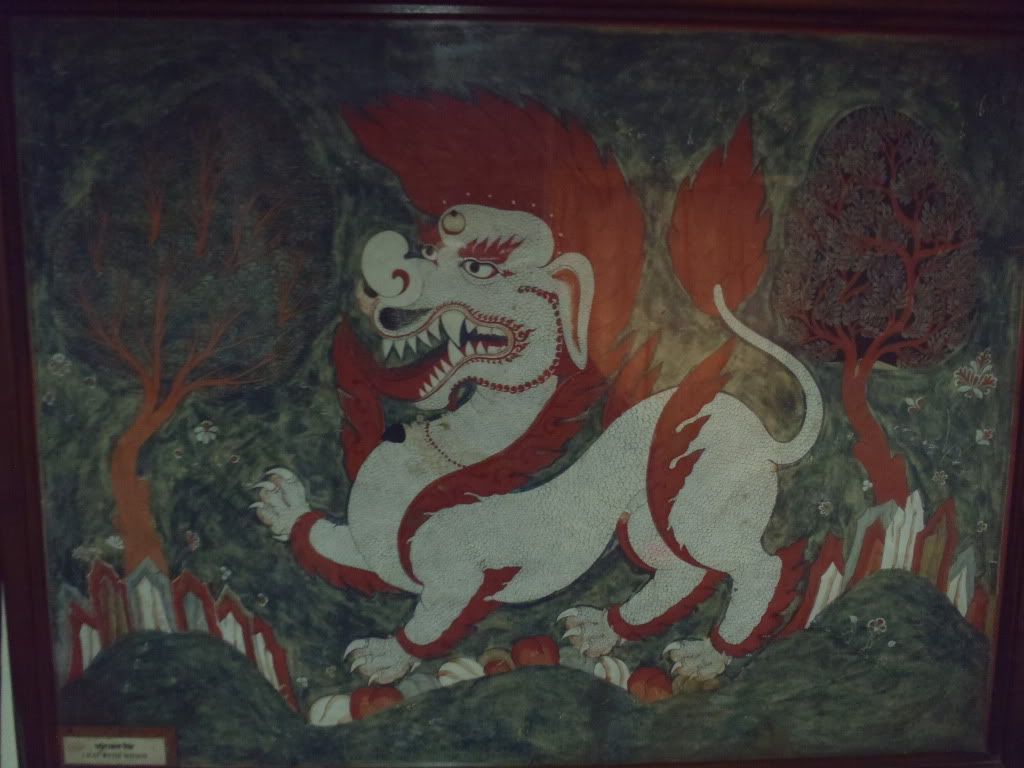
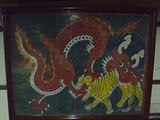
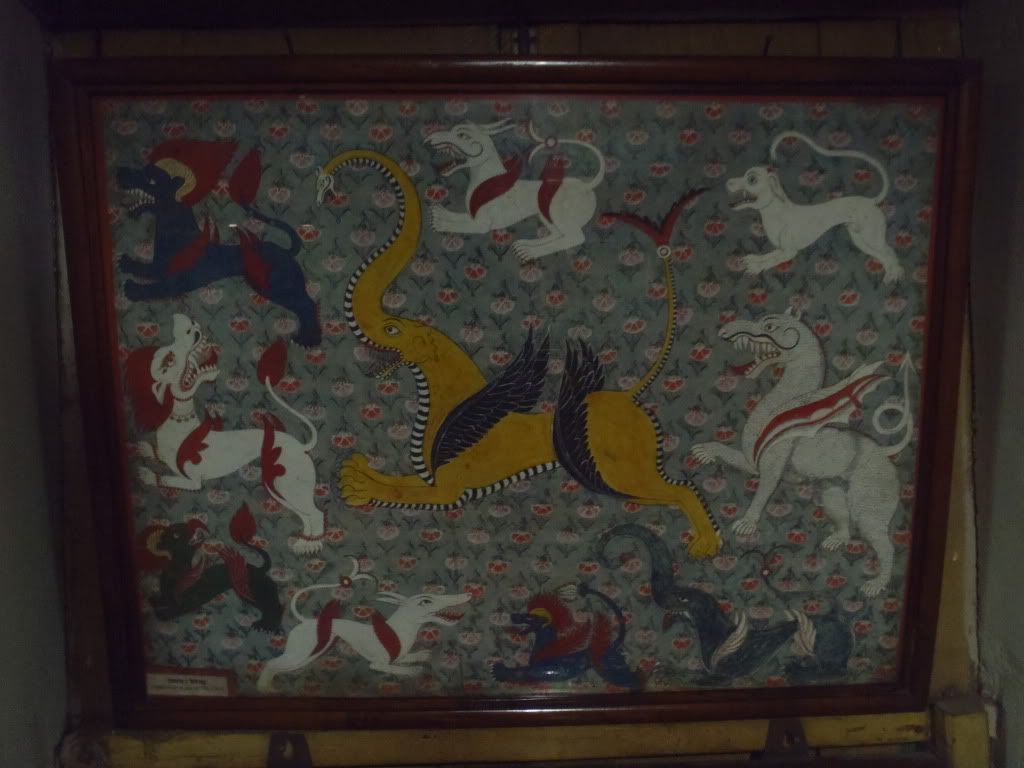
Since the entrance ticket to the Art Gallery also gave us access to the Woodcarving Museum and the Brass & Bronze Museum we had to make our way to the Tachupal Tole next. A 20 minute walk later we were on the square and in front of the first museum. Inside were a few cool wood carvings, but nothing too impressive. Sadly, the Brass & Bronze Museum across the street was equally bad. It took us about 15 minutes to work our way through both of them.

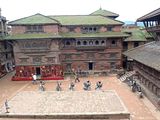
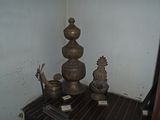
Back on the street we found the temples here more admirable. The largest one, Dattatreya Temple was originally built in 1427 and is dedicated to a hybrid of Brahma, Vishnu and Shivu from which the temple gets its name. The other temple worth mentioning was the Bhimsen Temple, which looked similar to the Bhimsen Temple we’d seen a few days before. Just 50 meters off the square we had a quick look at the Peacock Window. Again, one of the local merchants helped us out and even let me come into her store to take a picture from the 2nd floor. The Peacock Window is a 15th century wood carving of said bird and looked impressive.
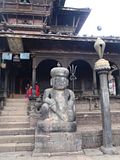
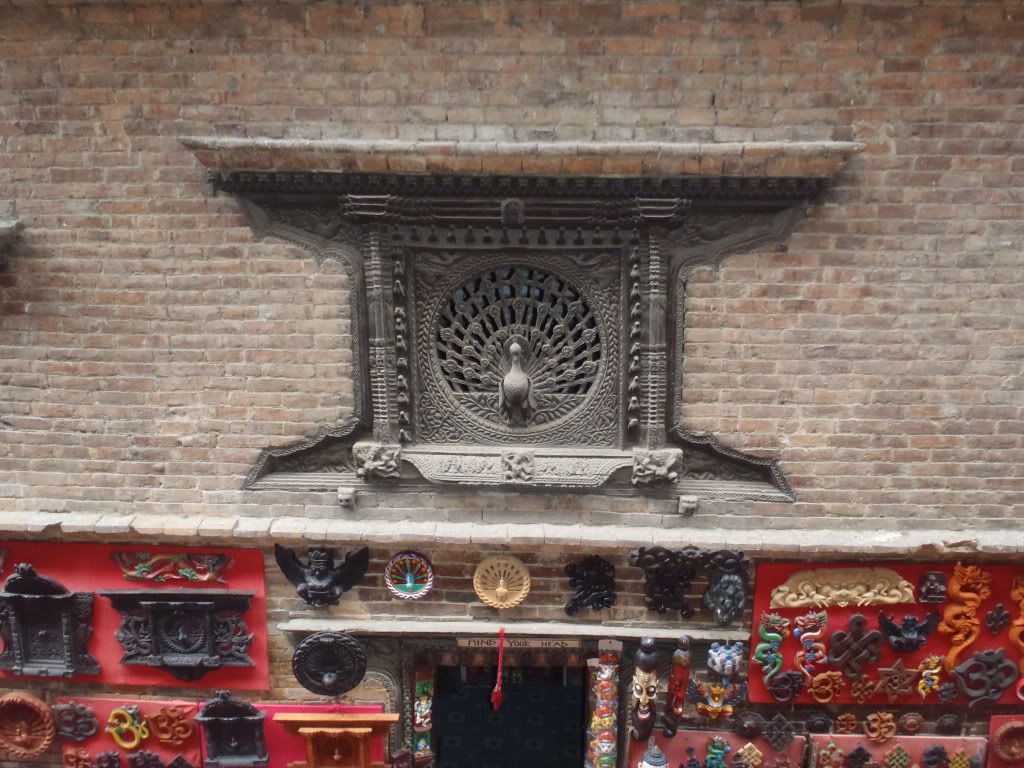
Francesca and I wanted to spend a little more time in quiet Bhaktapur and decided to have a look at Lonely Planet’s walking tour, which would take us outside the main area and into outskirts of the ancient city. I led us past a Vishnu temple further south to a Shakyamuni statue overlooking the countryside. Further down still we came across a huge collection of chaityas, Shiva statues and shrines and lingams. Quite the collection. By the river at Hanuman Ghat more ancient statues welcomed us, surprised to finally see some visitors.
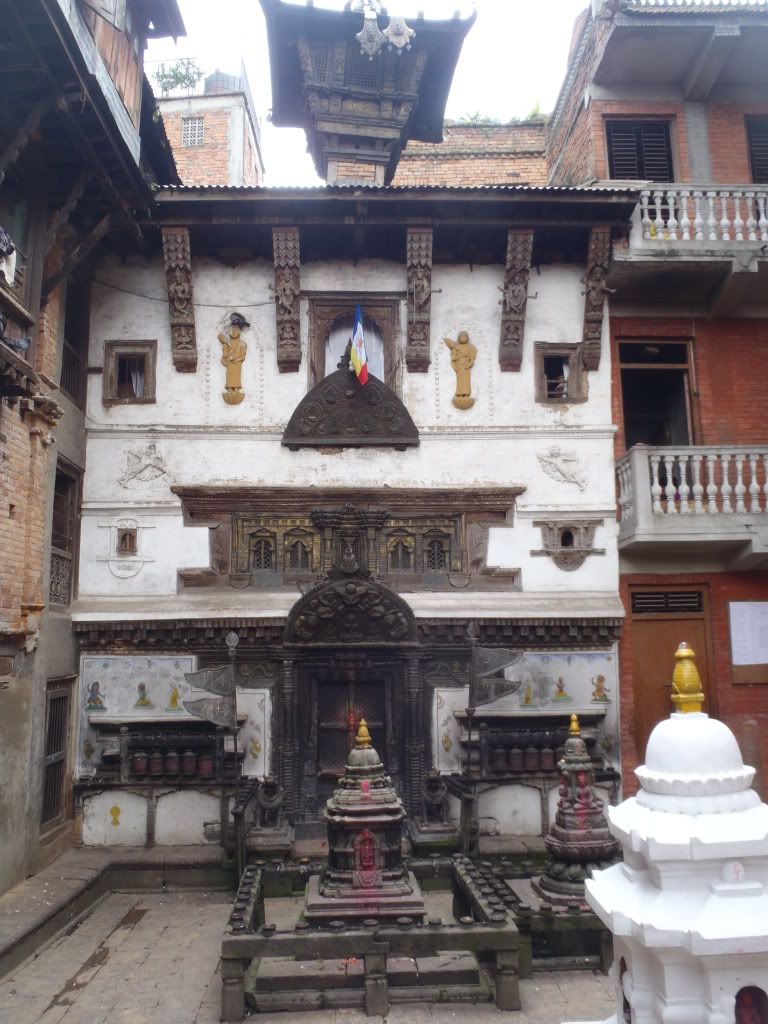
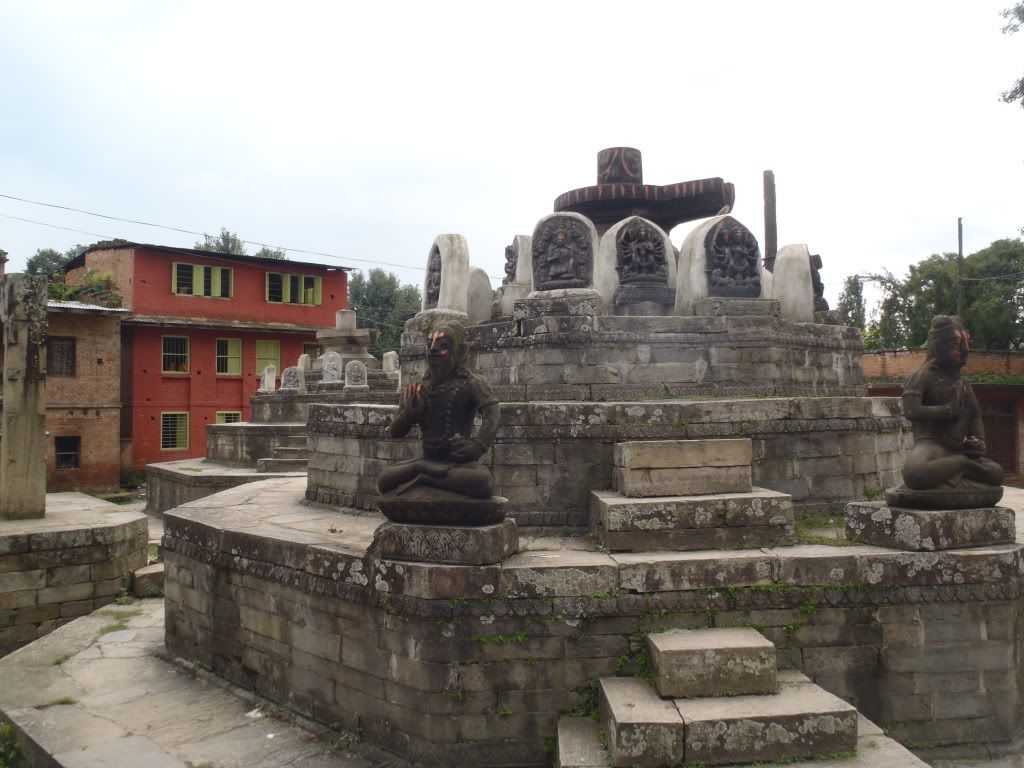
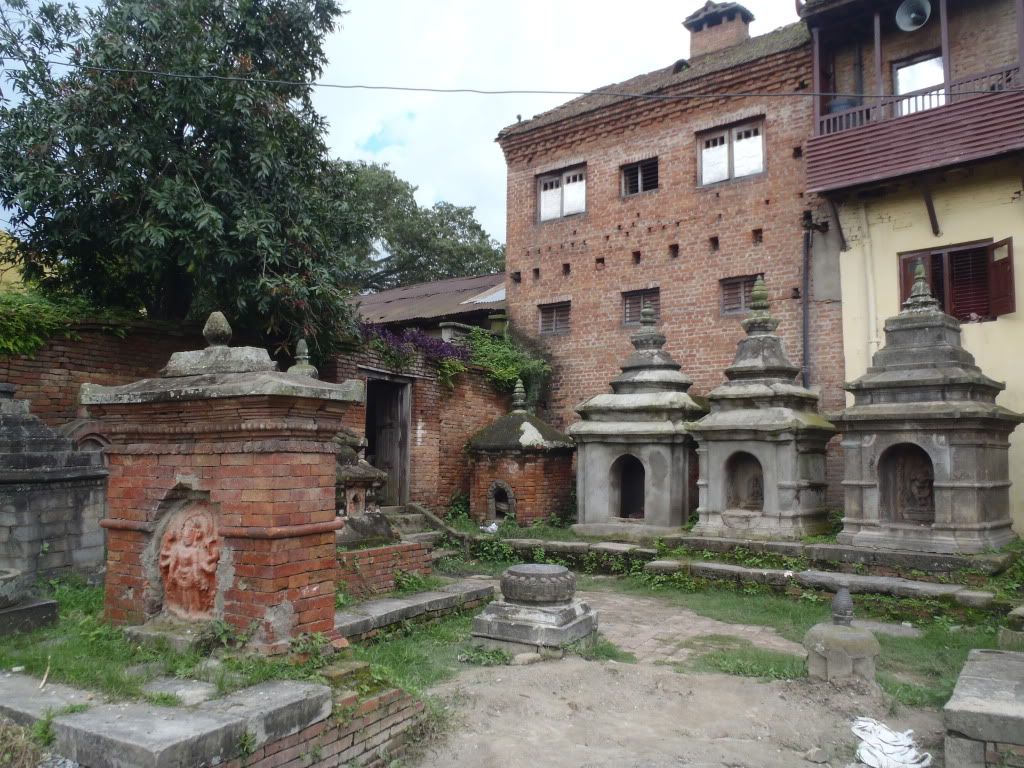
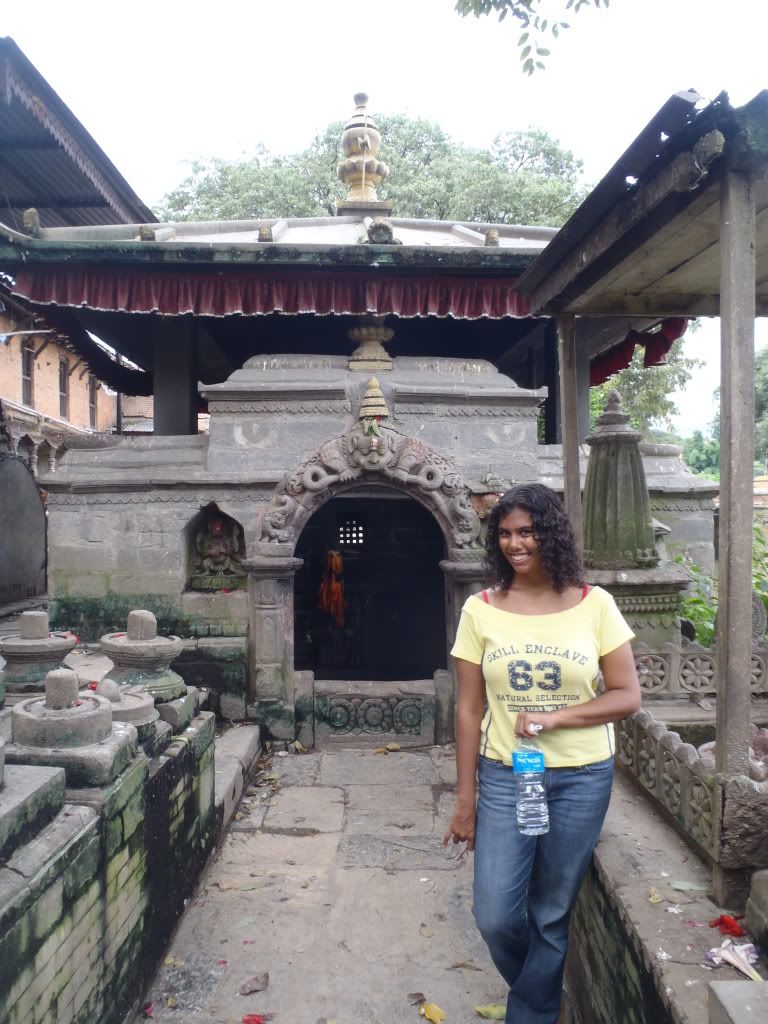
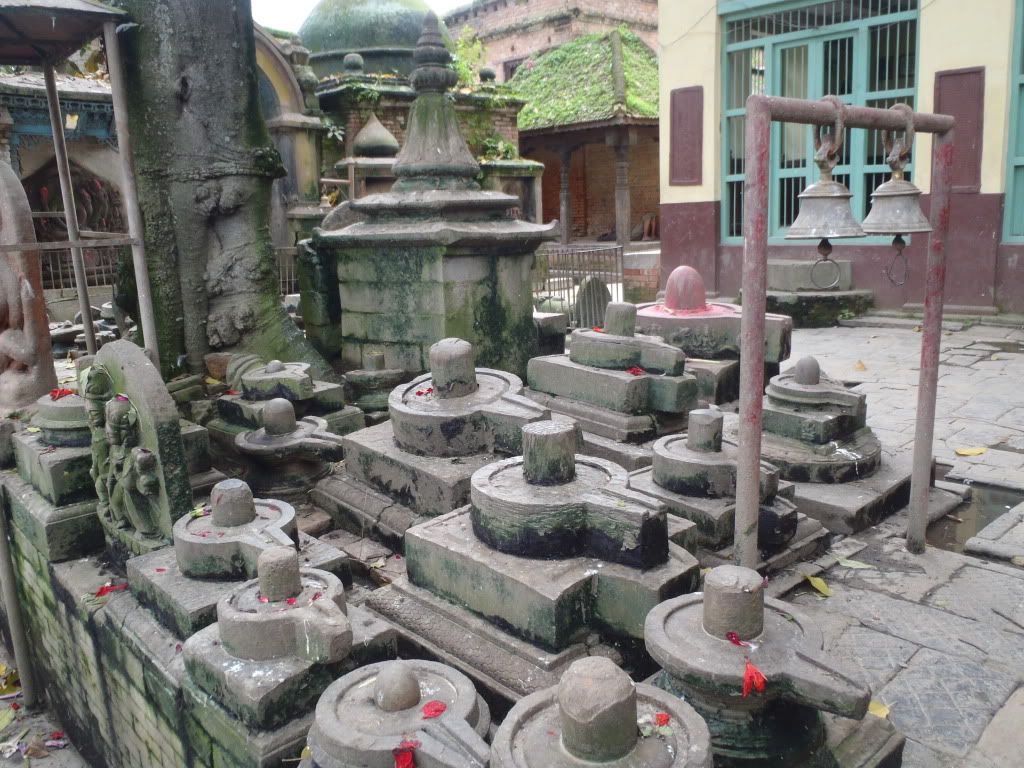
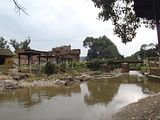
The scenic walk through nature soon ended as we made our way back uphill and into the city. We’d seen every other main temple in the vicinity now and were getting a little hungry. Bhaktapur is famous amongst the Nepali for its ‘juju dhau,’ the king of curds. Francesca isn’t the biggest fan of curd, but I love that stuff so I hoped to be in for a treat. We found a nice restaurant overlooking Durbar Square and ordered a bowl of curd, along with some sandwiches. I must admit, that curd was pretty darn good! Whilst we were eating it started raining quite heavily, leading us to consider leaving.
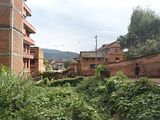
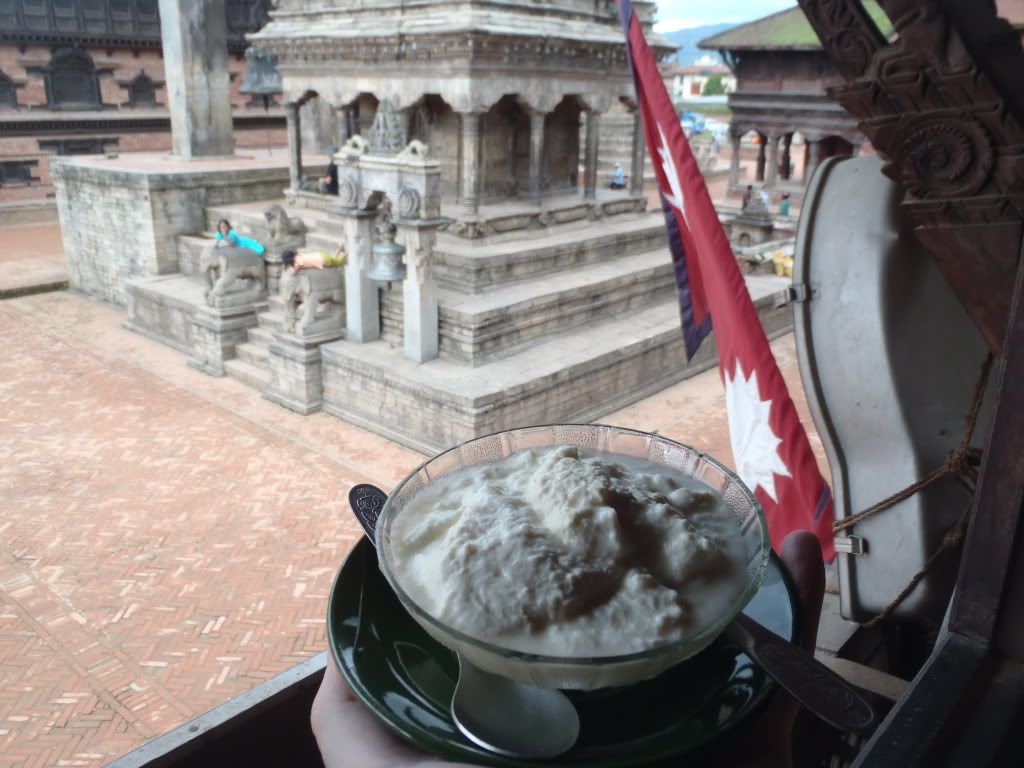
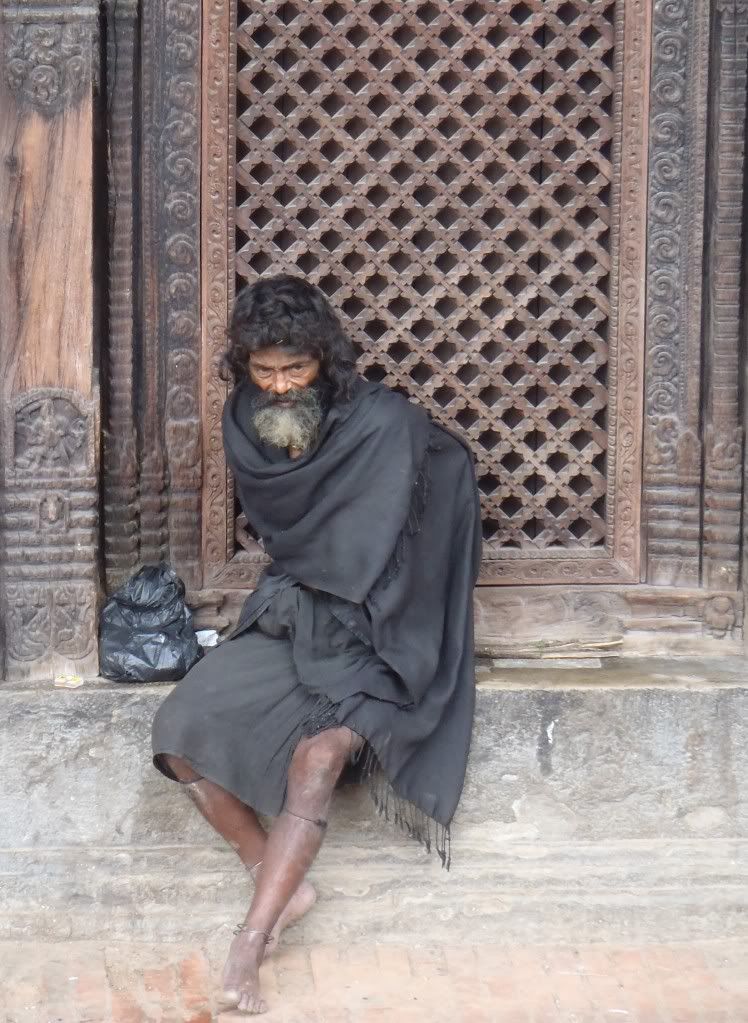
There was, however, one thing left to do. We’d heard the Gai Jatra, or ‘cow festival’ could possibly be taking place in town. It’s dedicated to those who died during the preceding year. Newars believe that, after death, cows will guide them to Yama, the god of the underworld. On this day cows are led through the streets and small boys dress up as cows. We followed the music after the rain stopped and found a merry band of boys playing some instruments, making their way through the city. There were no cows or cow-boys (he he) to be seen though. Some of the kids did have cool face paint on as they banged their sticks to the sound of the drums.
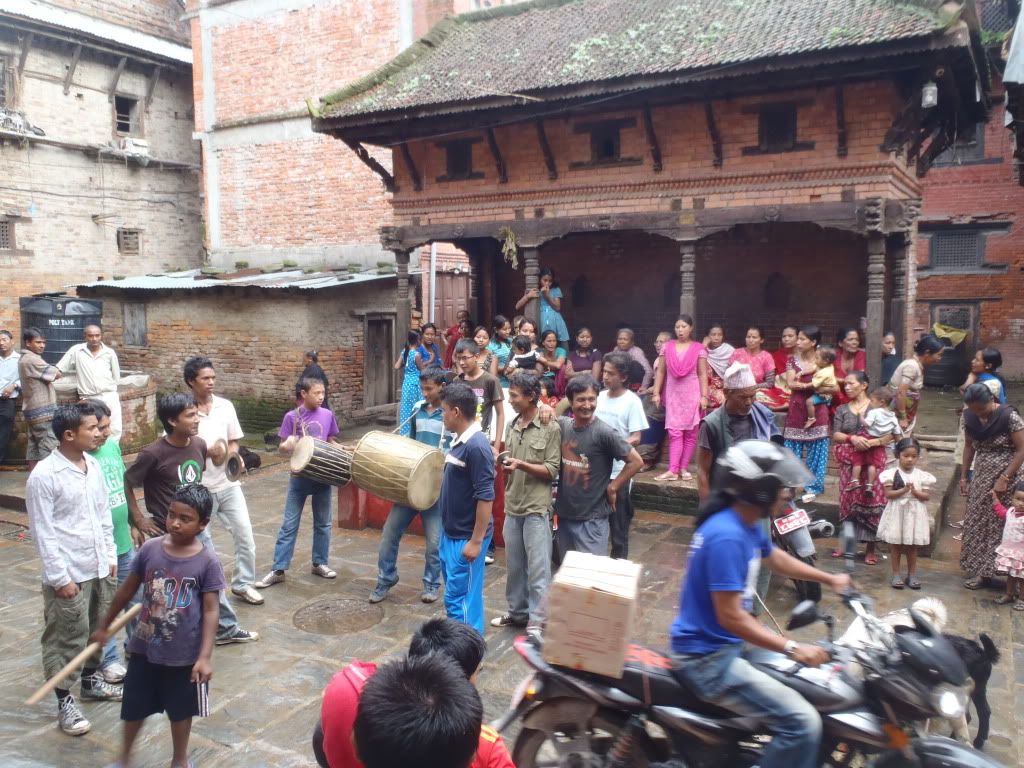
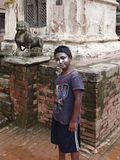
A little disappointed with the show Francesca and I walked to the last of the temples we wanted to see: the Erotic Elephants Temple. There were quite a few graphic representations of the act with several animals giving it their all! We’ll explain in another post why the Hindu people believe it’s perfectly normal to show images like these everywhere. We made our way back to our driver and asked him if we would have a problem with taking us to one more temple. The kind man agreed and around 5:00 PM we were on the road again. Now, when I say road, don’t think nice western asphalt. The roads in Nepal really are the worst of the worst. If they’re paved at all they usually have enormous holes, and if they’re not they still have loads of holes and extra free mud to boot. Driving is no joy and it’s no wonder a 6 kilometer drive still takes 30 minutes.
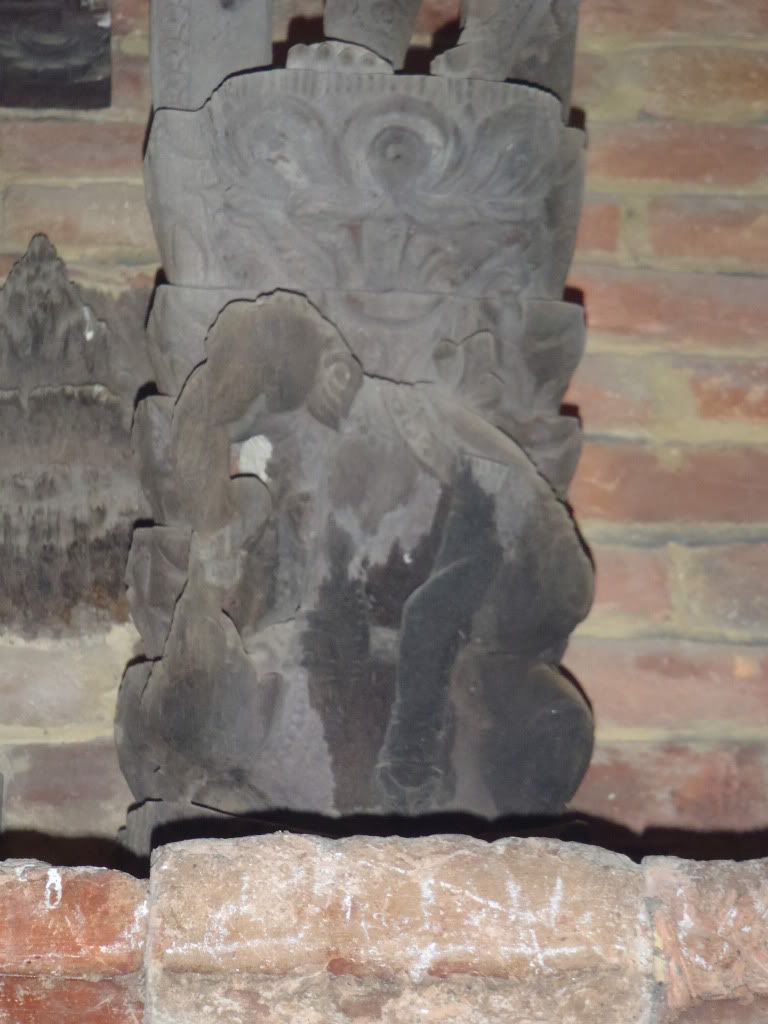
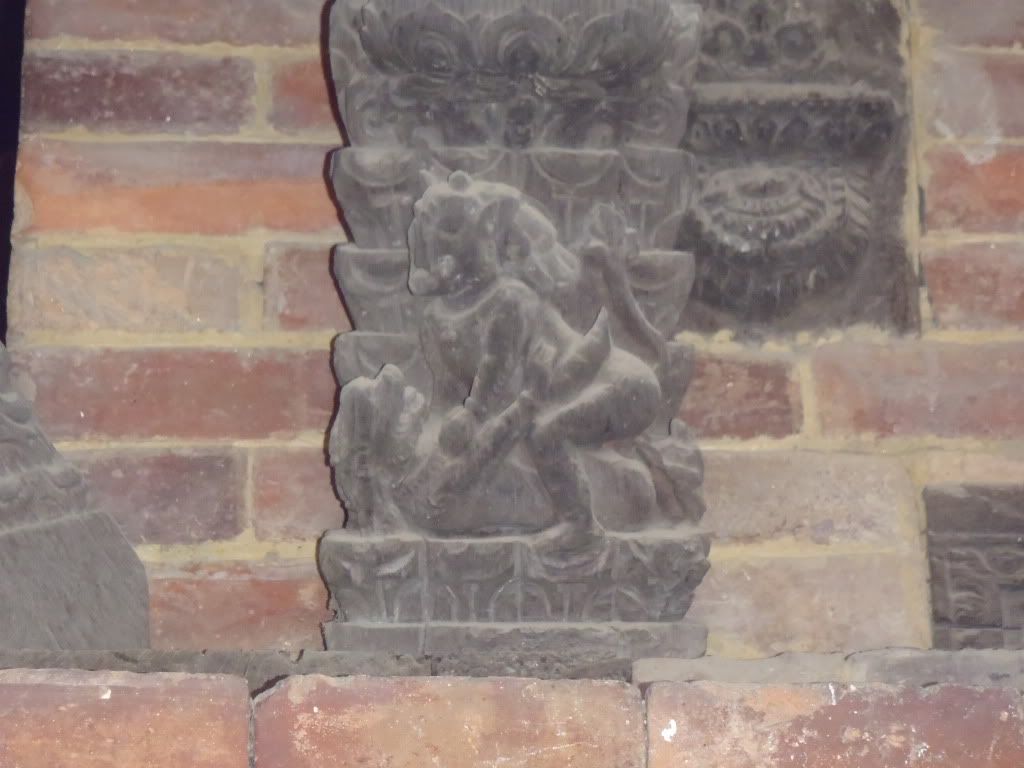
Perched atop a narrow ridge due north of Bhaktapur, the beautiful and historic temple of Changu Narayan awaited us. We got our tickets, promised our driver we’d hurry and headed uphill. Walking past the town’s tiny museum we soon found ourselves overlooking the valley surrounding us. What a view! The temple also loomed in front of us as we were greeted by a local student who offered to take us around and tell us a little extra. We didn’t object and gladly listened to his stories. Just outside of the temple we saw some 5th century statues, as well as an offering place where the bloodstains clearly covered the bricks.
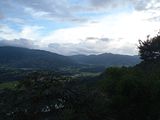
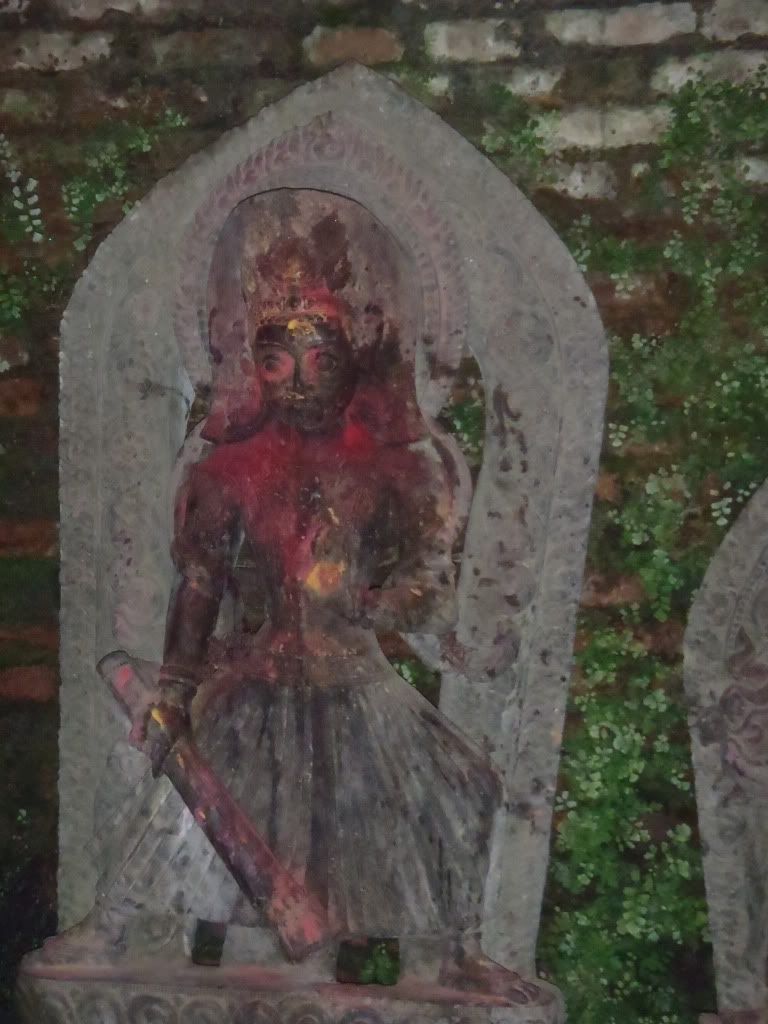
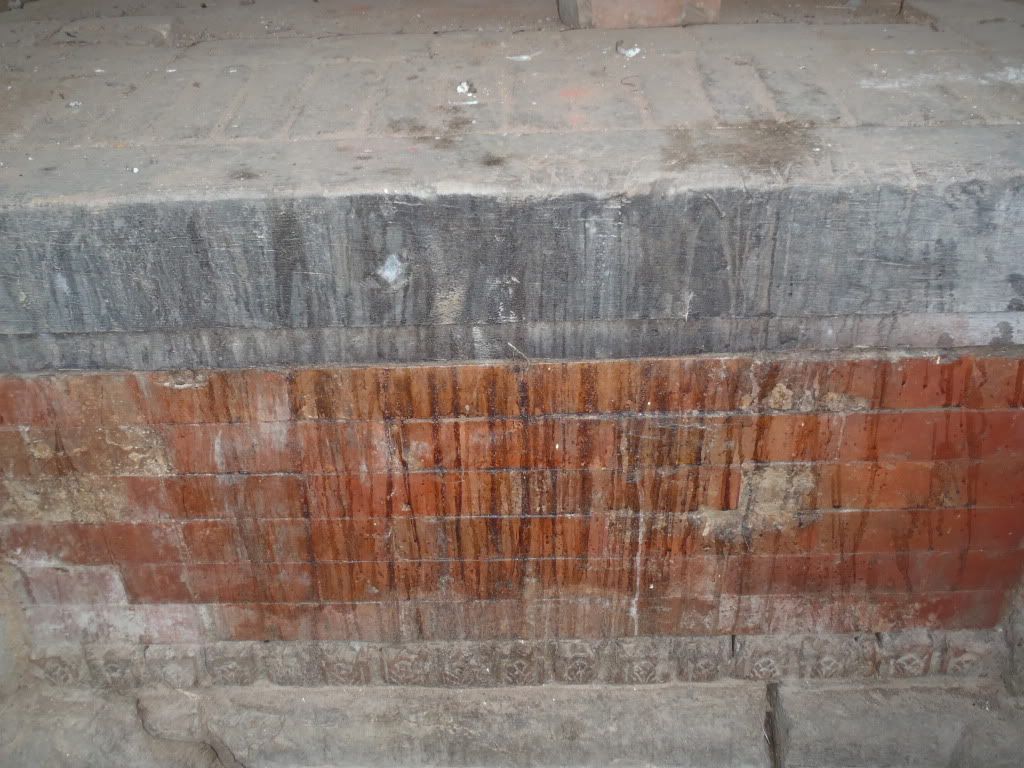
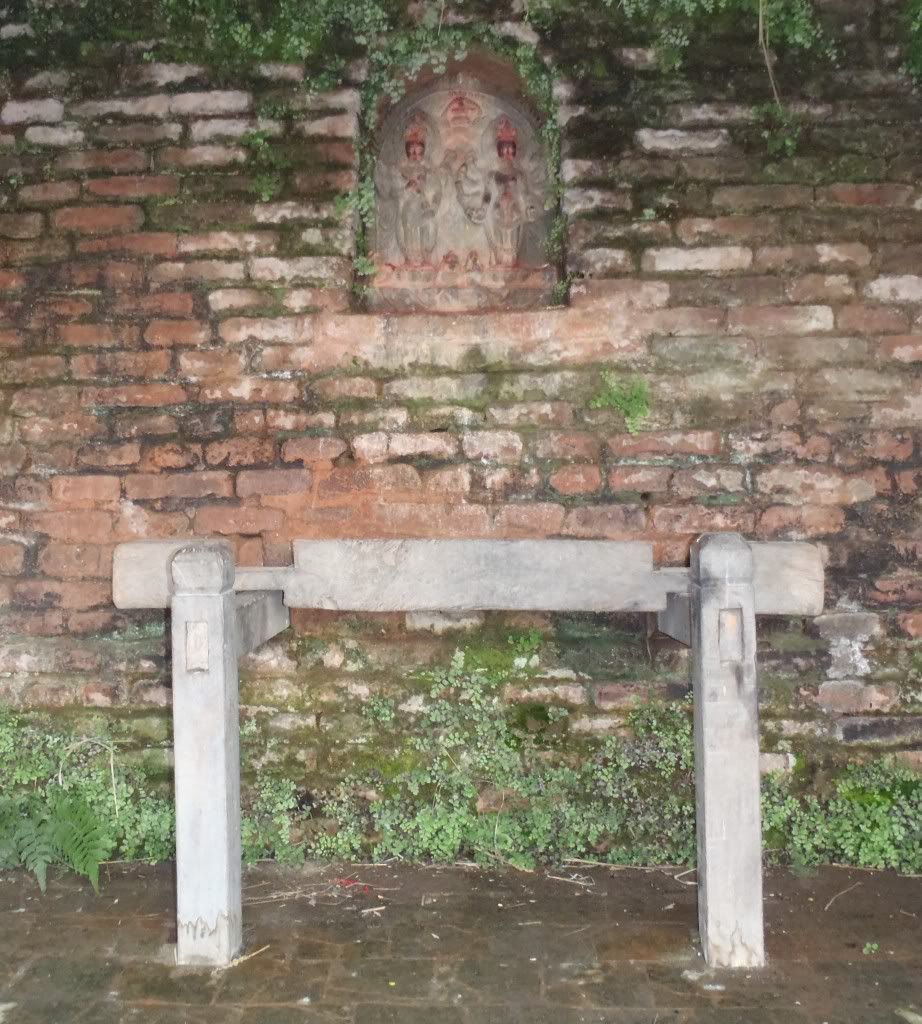
A short staircase took us inside the temple. The Lonely Planet hadn’t lied – what an impressive temple. The red and gold color scheme worked perfectly. We learned from our impromptu guide that restorations had just finished and that we’d come only a day after the scaffolding had been taken down. On the sides old carvings were just standing around, having once belonged to smaller temples that had been destroyed. Let’s hope they’ll be able to put them to good use again one day.

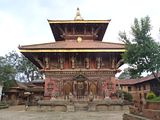
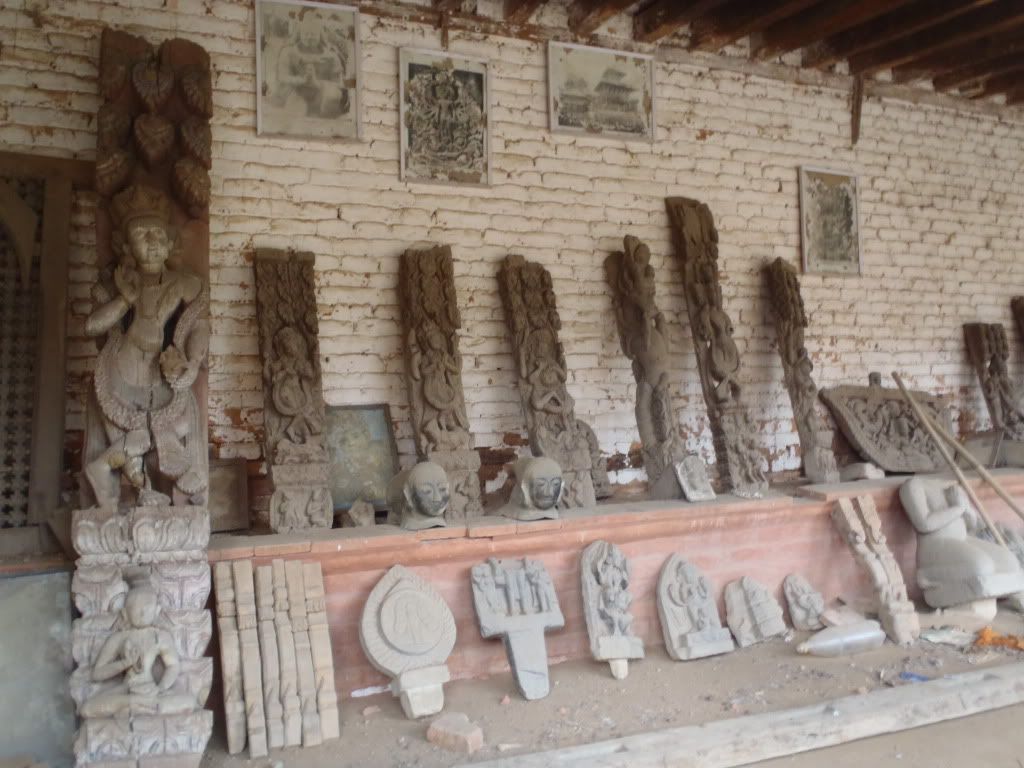
We learned that the temple is one of the oldest Hindu temples of the valley, and is believed to have been constructed in the 4th century. Changu Narayan is the name of an incarnation of Vishnu, and the Temple is dedicated to him. We first had a closer look at the beautifully decorated temple and its guardians – lions, elephants and ram-horned griffons protect the temple from danger. On the other end of the little enclosed complex a kneeling Garuda, said to date from the 5th century, looks to be worshipping Changu Narayan. Next to the Garuda we had a look at a stone slab, discovered in the vicinity of the temple and dating back to the 5th century; it is the oldest stone inscription found in Nepal.
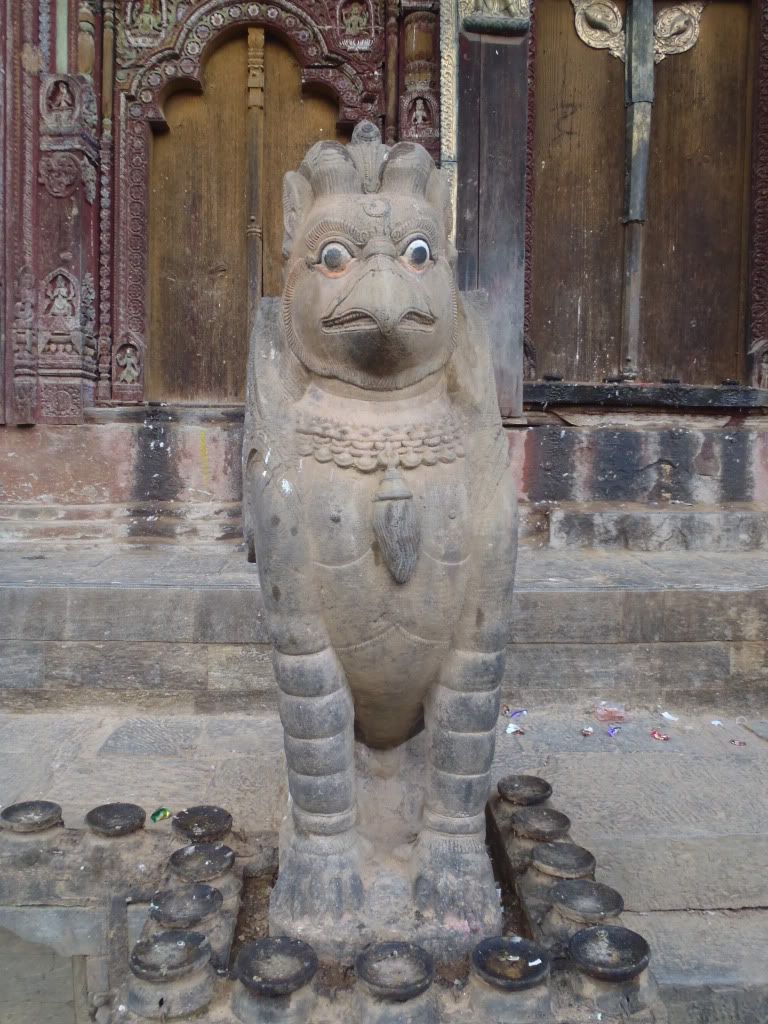
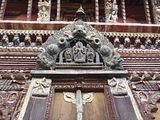
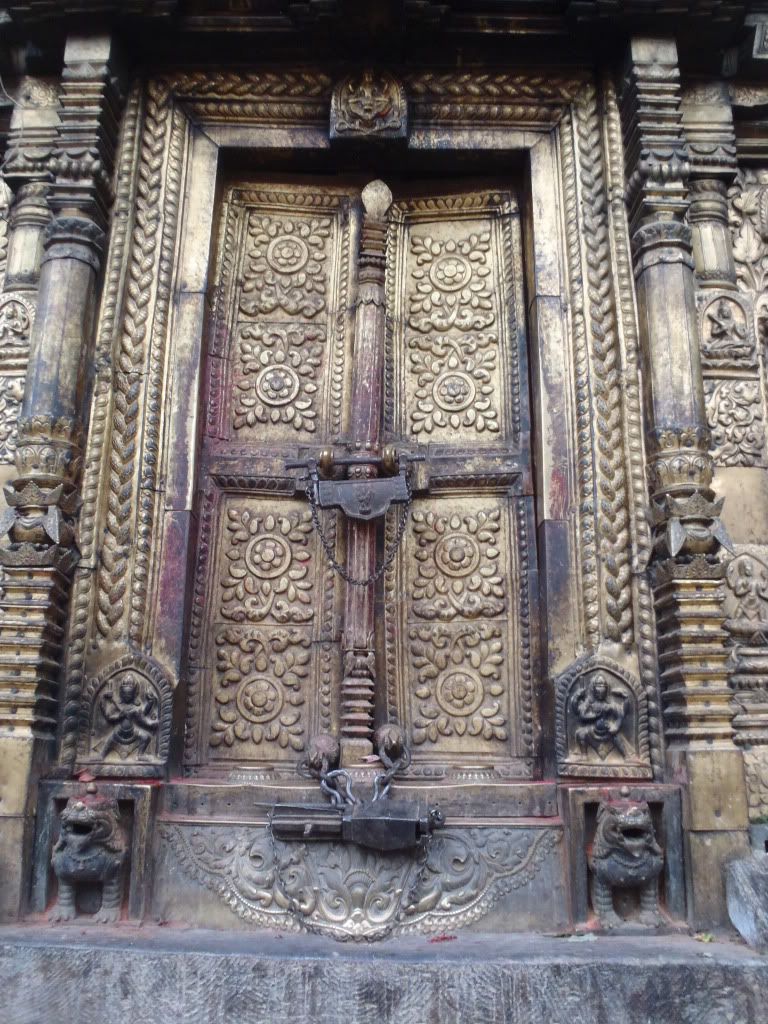
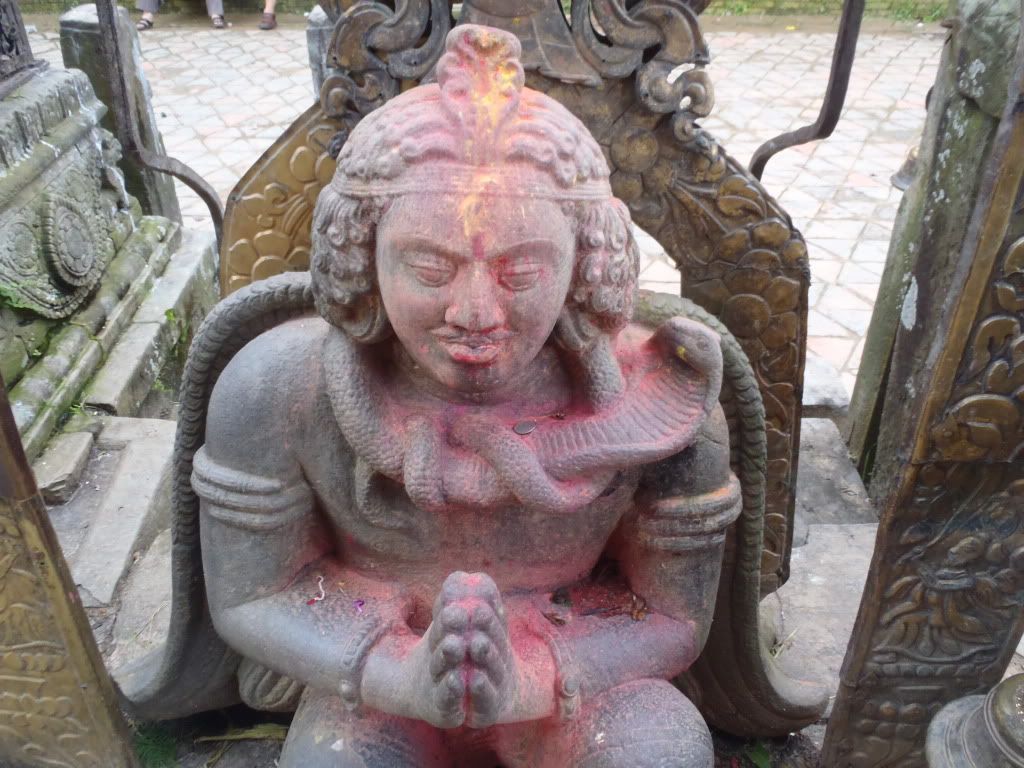
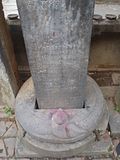
Our new friend took a little extra time at a small, broken slab with a relief of a 10-headed and 10-armed Vishnu, with Ananta reclining on a serpent below. The scenes are divided into three sections – the underworld, the world of man and the heavens. It was here that we learned a little more about Nepal’s caste system. The caste system defines social statues by birth. If you’re born into a certain caste you’ll always remain a member of that caste and your future is pretty much decided accordingly. The highest caste are the Brahmins, or priests; second come the Chhetri, generally soldiers and government workers; third are the Vaisyas, usually traders and farmers; and fourthly the Sudras, menial workers and craftspeople. Below all of these castes come the Harijans, or ‘untouchables,’ the lowest, casteless people that can only do the most basic, degrading jobs. Our stone slab showed perfectly where in the world each caste ended up. We were also glad to learn that the caste system isn’t being enforced as tightly as it used to be anymore. More kids nowadays always have a fair chance at good education and acquire their jobs accordingly. It’s mainly the countryside where the castes still stand.
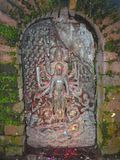
The final interesting temple on the square was the small Chinnamasta Temple, dedicated to the wrathful goddess Kali. It had been partially destroyed by plunderers and the gold had been replaced by brass, but the intricate carvings in the metal were still striking to behold. Rather randomly, an unfinished statue of an elephant stood next to it. Legend has it that one night the sculptor was nearly done with his creation and left to finish the next morning. When he came back he found the statue had moved on its own. He took this as a sign and left it where it was. Oh, practical jokes in those days must have been so much easier to pull off… We then followed our guide back outside.
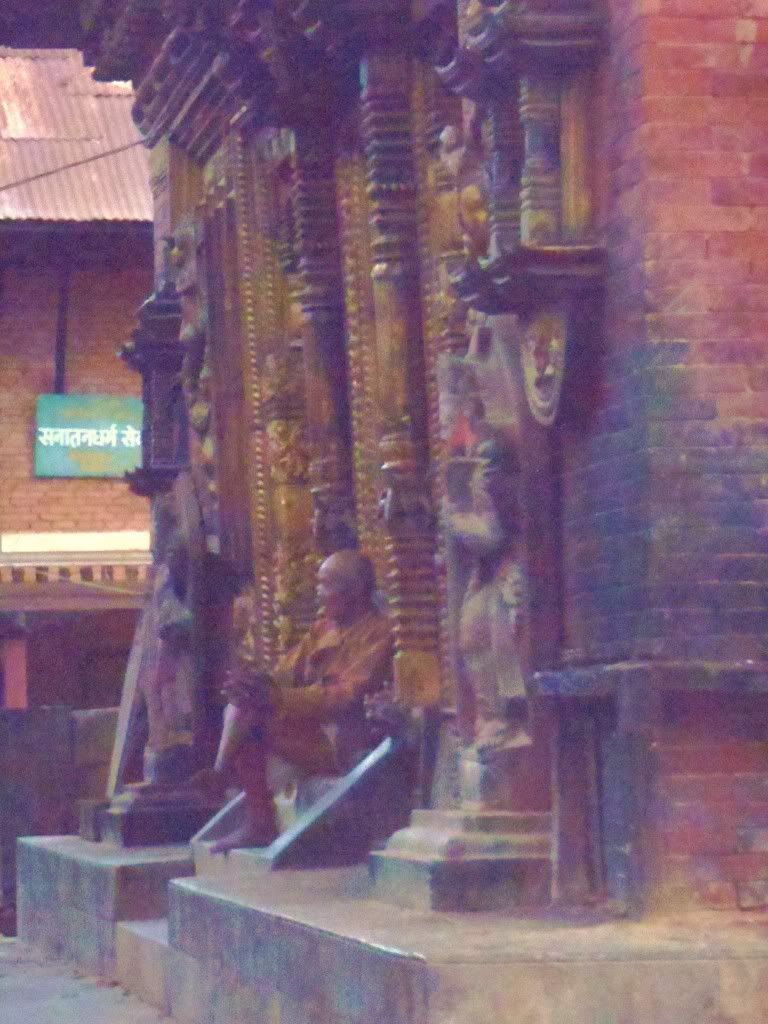
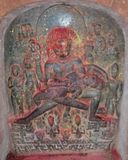
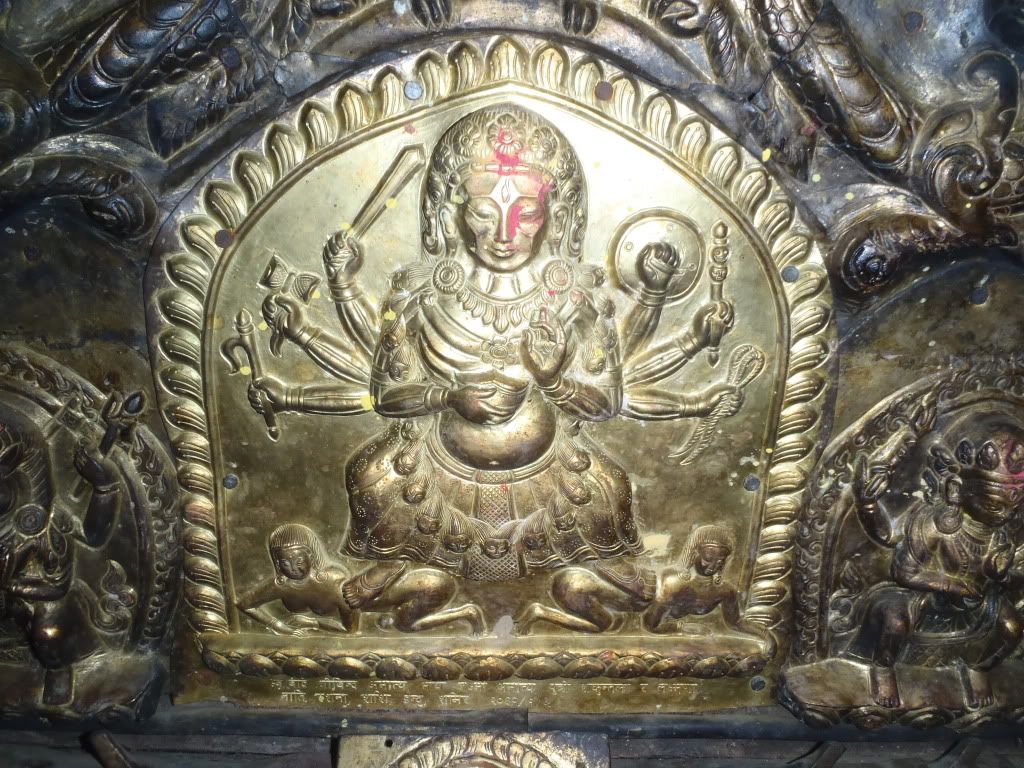
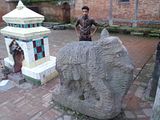
Of course he had planned to make a little money off of us. We didn’t mind too much when he told us he had a little mandala shop. There were quite a few we were interested in and we actually thought of buying one, but simply didn’t think we could carry it with us safely. We said we’d think about it and made our way to the tiny museum. The owner had waited for us to come back down and turned on the lights for us. Not wanting to keep him and our driver terribly long we quickly had a look at everything and took some pictures. The man had a neat collection with a neat introduction to village life, with lots of artifacts covering two floors. Equally impressive was his hefty and prized coin collection. Francesca particularly liked the ancient dish-rack, which looks surprisingly similar to tools we still use today. We said goodbye to the old guy, made a beeline for our driver and told him to head for home.

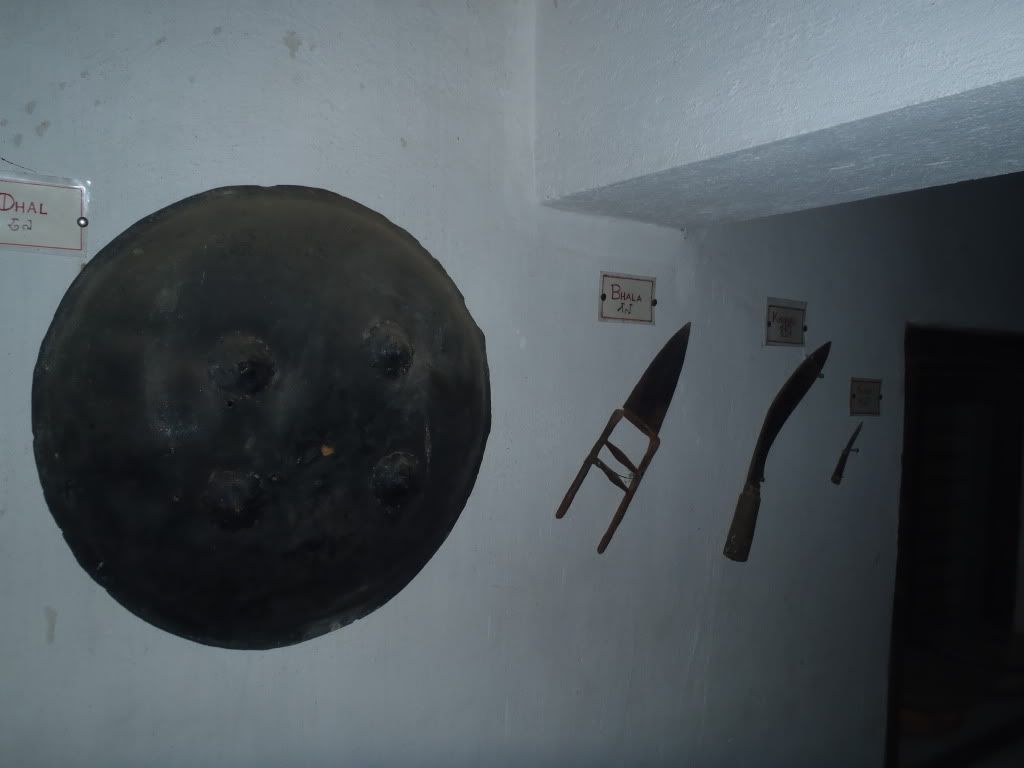
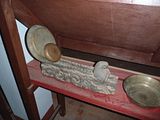
After paying him a little extra for the troubles we were finally back at Avalon around 8:00 PM. I decided to take Francesca out to a traditional Nepali restaurant I’d found further down the street. Here we were treated to a total of 11 different local dishes which we shared, whilst cultural dances were performed from time to time. Here’s an overview of the highlights: Kalo Dal (lentils prepared in an iron pot with heated purified butter, then garnished with herbs); Khasi Ko Ledo (a gravy mutton dish); Bandhel Tareko (boiled, fried, sautéed wild boar mixed with local spices); Kukhura ko Sekuwa (charcoal-grilled marinated chicken); and for desert we got to try Shikarni (thick yogurt mixed with dry nuts and cinnamon powder). Needless to say we filled up quite nicely. The highlight of the evening came for Francesca after we paid though, since we received two little masks of Hindu gods.
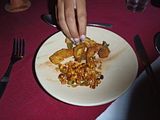
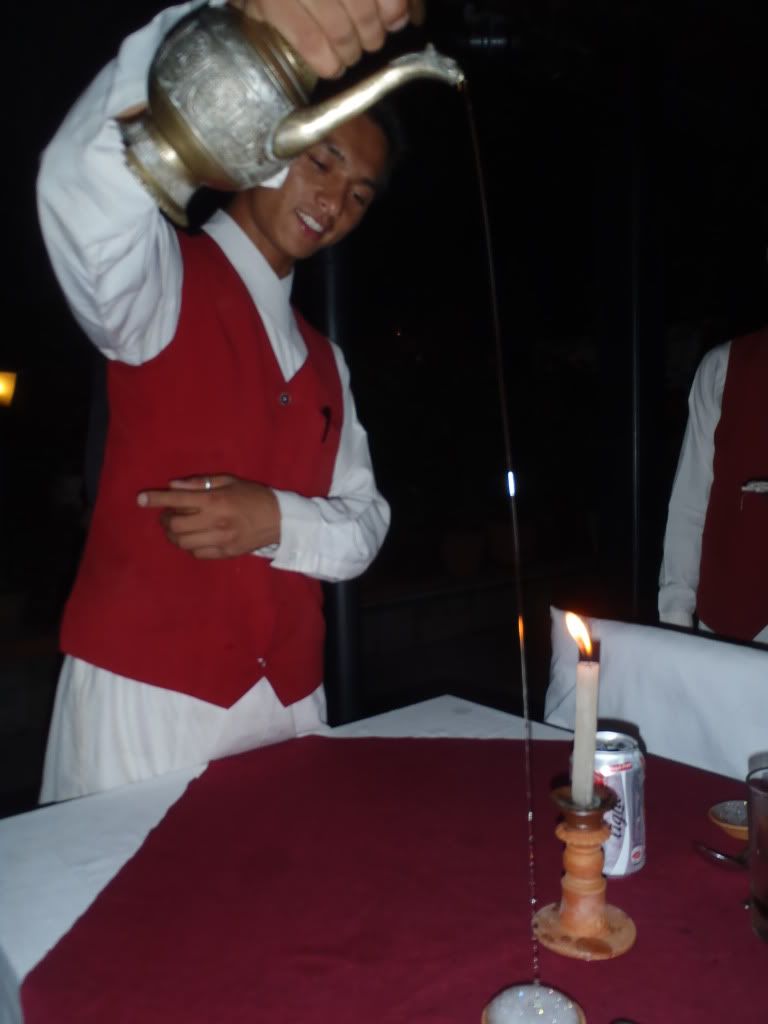
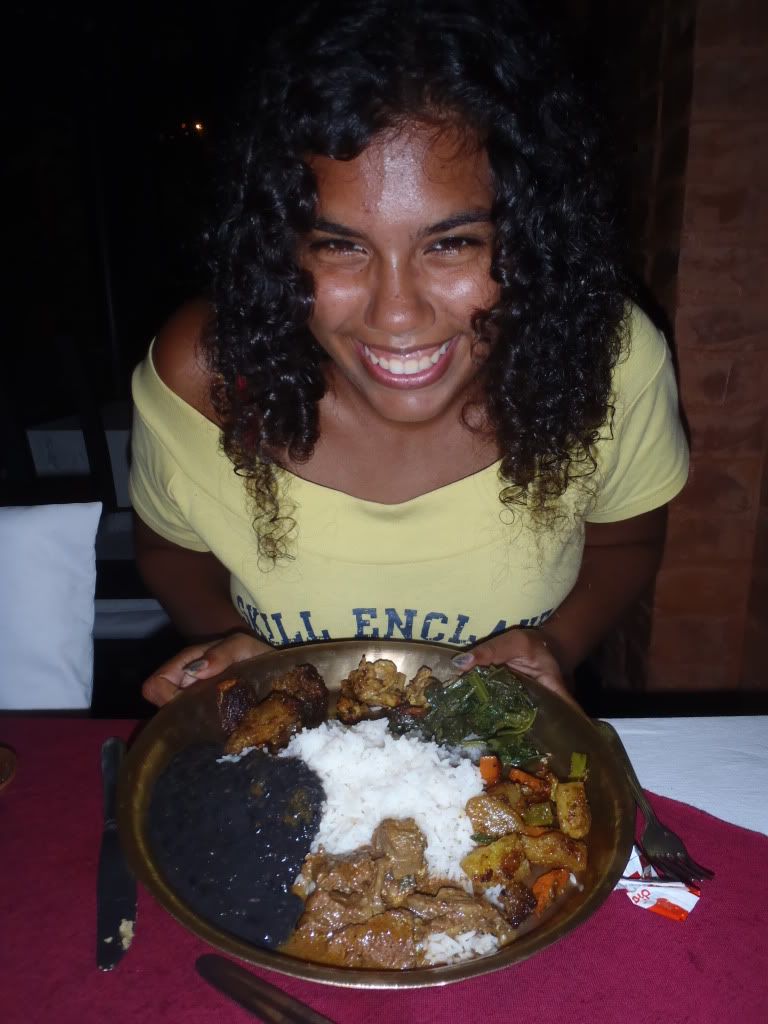
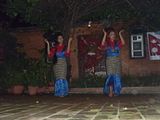
Bhaktapur, literally meaning “The Town of Devotees,” is believed to have existed from the early 9th century AD. It was the capital of the Kathmandu Valley from the twelfth century to the fourteenth century and then an independent kingdom until 1769, when the Shahs invaded. Bhaktapur was partially destroyed during the 1934 earthquake, but with the help of the Germans rebuilt and restored during the 1970s. Arriving at the ticket office we saw a vast square with lots of huge buildings and hoped the promised quietude would last.
A guide approached us after we had bought our tickets, offering to take us around for just a few dollars. Since we’re both inherently a little lazy this seemed fine to us and we followed the young man onto Durbar Square. The first thing he showed us was a pair of stone lions, erected by King Bhupatindra Malla in 1701. On either side stood statues of the terrible Bhairab, a wrathful incarnation of Shiva and of his companion Ugrachandi. Legend has it the sculptor lost his hands as a reward for crafting the masterpieces, to prevent him from ever duplicating them.


Just to the right of us our guide pointed out the Rameshwar and the Krishna Temple, which we had a quick look at. With the Royal Palace now appearing on our left Francesca and I were shown the much larger and much more impressive stone Vatsala Durga Temple, which was built by King Jagat Prakash Malla sometime in the 17th or 18th century. In front of the temple stand King Bhupatindra Malla’s Column, as well as the Taleju Bell, built by King Jaya Ranjit Malla in 1737 to mark morning and evening prayers at nearby Taleju Temple.



Before having a look at said temple our guide took us to the Royal Palace proper. The building itself is not open to inspection (other than the museum, which we’d visit later that day), but the Golden Gate (Sun Dhoka), the entrance to the 55 Window Palace looked fabulous. The frieze shows Hindu deities in great detail. After inspecting it, Francesca walked inside, first coming past ancient war drums, and had a look at 55 tiny windows peaking down at us from a relatively small courtyard. Apparently the King once housed his 55 wives in rooms overlooking the area. You’d start to wonder how he even got around to ruling his kingdom…



Further inside the Taleju Temple was off-limits to us non-Hindus, but we were able to have a look inside from the open door. Also part of the inner courtyards was the Naga Pokhari, a 17th century water tank. The pool is encircled by a stone cobra and inside the tank a cobra looks out at visitors. Being done with the Palace for now our guide led us to the Cyasilin Mandap, a small temple with a stone marker explaining in German how the Germans helped rebuild the square and its surroundings. Not very useful for people that don’t read German… Luckily I could translate it without problems! Behind it an old, dried up water tank looked sad it had lost the important role it once carried.


Behind the Vatsala Durga Temple, the Pashupatinath Temple is the oldest temple of the square. It was built in 1475 by King Yaksha Malla and is dedicated to Shiva’s incarnation Pashupati. The erotic roof carvings were quite a sight to behold. A little further away stood the 17th century Siddhi Lakshmi Temple, or Stone Temple. It has been built in the classic shikhara style from North India and the steps leading up to the temple proper have an interesting array of statues – they’re lined with male and female attendants, children and dogs, horses, rhinos, lions and camels. A sad looking pair of stone lions just a little in front of the Stone Temple are all that remains of a temple that was completely destroyed during the big earthquake. Finally, the bulky Fasidega Temple was built in honor of Shiva, with a large lingam inside.


Walking a little ways off the square our guide now took us to a Mandala Shop. Here we learned everything about the creation of painted mandalas. Young recruits (often Tibetan) are carefully trained in the art, and slowly work their way to master status. It take several years before one can make mandalas so well that they look perfect and even then making one takes several days. We got to see several rooms where young people were destroying their eyes, peering at their canvases as they carefully applied the paint. Of course we were offered to buy something, and I must admit I was tempted, but over 100 dollars for a souvenir like that is just a little too much (if not a fair reflection of the craftsmanship, materials used and time invested).


Our guide continued his walk, taking us around Tadhunchen Bahal, a Buddhist temple/monastery linked to the cult of the Kumari, a living goddess Francesca will later tell you much more about. An alleyway led us to Taumadhi Tole, the next square on the agenda. Before having a look at the temples here our guide pointed out a stack of chariot components, used every year for a massive tug-of-war between all the locals. The first building that stood out as we walked onto Taumadhi Tole was the enormous Nyatapola Temple. With five stories totaling a height of 30 meters this is the highest temple in all of Nepal. It was built in 1702 during the reign of Bhupatindra Malla and dedicated to Siddhi Lakshmi, a wrathful incarnation of Parvati. We learned that we weren’t allowed to see the idol of the goddess since she’s too scary to behold, leaving her in the caring hands of a few lucky priests.


Also on the square is the much broader and lower Bhairabnath Temple, dedicated to Bhairab, the wrathful incarnation of Shiva. The original temple was a little too modest according to King Bhupatindra Malla as he decided to add an extra level in 1717. After the earthquake another storey was added as the entire thing had to be renovated. Our guide seemed to want to end our tour and walked us to Potters’ Square. It sure was aptly named with people making and selling pottery everywhere and pottery drying out in the sun all over it. We were not terribly interested in the pottery and followed our guide through a maze of narrow lanes back to Durbar Square. Of note were some terribly deformed walls, damaged and left standing after the earthquake.



Back on Durbar Square we paid our guide and headed for the National Art Gallery. After paying a small sum we got to see an extensive collection of Tantric cloth paintings (similar to Tibetan thangkas), as well as palm-leaf manuscripts, and metal, stone and wooden votive objects. Furthermore, the walls were lined with paintings of all the Malla Kings. It was funny to see how they all looked so alike. The view of the square from inside the museum was worth it and being able to see the inside of the palace made it extra valuable.





Since the entrance ticket to the Art Gallery also gave us access to the Woodcarving Museum and the Brass & Bronze Museum we had to make our way to the Tachupal Tole next. A 20 minute walk later we were on the square and in front of the first museum. Inside were a few cool wood carvings, but nothing too impressive. Sadly, the Brass & Bronze Museum across the street was equally bad. It took us about 15 minutes to work our way through both of them.



Back on the street we found the temples here more admirable. The largest one, Dattatreya Temple was originally built in 1427 and is dedicated to a hybrid of Brahma, Vishnu and Shivu from which the temple gets its name. The other temple worth mentioning was the Bhimsen Temple, which looked similar to the Bhimsen Temple we’d seen a few days before. Just 50 meters off the square we had a quick look at the Peacock Window. Again, one of the local merchants helped us out and even let me come into her store to take a picture from the 2nd floor. The Peacock Window is a 15th century wood carving of said bird and looked impressive.


Francesca and I wanted to spend a little more time in quiet Bhaktapur and decided to have a look at Lonely Planet’s walking tour, which would take us outside the main area and into outskirts of the ancient city. I led us past a Vishnu temple further south to a Shakyamuni statue overlooking the countryside. Further down still we came across a huge collection of chaityas, Shiva statues and shrines and lingams. Quite the collection. By the river at Hanuman Ghat more ancient statues welcomed us, surprised to finally see some visitors.






The scenic walk through nature soon ended as we made our way back uphill and into the city. We’d seen every other main temple in the vicinity now and were getting a little hungry. Bhaktapur is famous amongst the Nepali for its ‘juju dhau,’ the king of curds. Francesca isn’t the biggest fan of curd, but I love that stuff so I hoped to be in for a treat. We found a nice restaurant overlooking Durbar Square and ordered a bowl of curd, along with some sandwiches. I must admit, that curd was pretty darn good! Whilst we were eating it started raining quite heavily, leading us to consider leaving.



There was, however, one thing left to do. We’d heard the Gai Jatra, or ‘cow festival’ could possibly be taking place in town. It’s dedicated to those who died during the preceding year. Newars believe that, after death, cows will guide them to Yama, the god of the underworld. On this day cows are led through the streets and small boys dress up as cows. We followed the music after the rain stopped and found a merry band of boys playing some instruments, making their way through the city. There were no cows or cow-boys (he he) to be seen though. Some of the kids did have cool face paint on as they banged their sticks to the sound of the drums.


A little disappointed with the show Francesca and I walked to the last of the temples we wanted to see: the Erotic Elephants Temple. There were quite a few graphic representations of the act with several animals giving it their all! We’ll explain in another post why the Hindu people believe it’s perfectly normal to show images like these everywhere. We made our way back to our driver and asked him if we would have a problem with taking us to one more temple. The kind man agreed and around 5:00 PM we were on the road again. Now, when I say road, don’t think nice western asphalt. The roads in Nepal really are the worst of the worst. If they’re paved at all they usually have enormous holes, and if they’re not they still have loads of holes and extra free mud to boot. Driving is no joy and it’s no wonder a 6 kilometer drive still takes 30 minutes.


Perched atop a narrow ridge due north of Bhaktapur, the beautiful and historic temple of Changu Narayan awaited us. We got our tickets, promised our driver we’d hurry and headed uphill. Walking past the town’s tiny museum we soon found ourselves overlooking the valley surrounding us. What a view! The temple also loomed in front of us as we were greeted by a local student who offered to take us around and tell us a little extra. We didn’t object and gladly listened to his stories. Just outside of the temple we saw some 5th century statues, as well as an offering place where the bloodstains clearly covered the bricks.




A short staircase took us inside the temple. The Lonely Planet hadn’t lied – what an impressive temple. The red and gold color scheme worked perfectly. We learned from our impromptu guide that restorations had just finished and that we’d come only a day after the scaffolding had been taken down. On the sides old carvings were just standing around, having once belonged to smaller temples that had been destroyed. Let’s hope they’ll be able to put them to good use again one day.



We learned that the temple is one of the oldest Hindu temples of the valley, and is believed to have been constructed in the 4th century. Changu Narayan is the name of an incarnation of Vishnu, and the Temple is dedicated to him. We first had a closer look at the beautifully decorated temple and its guardians – lions, elephants and ram-horned griffons protect the temple from danger. On the other end of the little enclosed complex a kneeling Garuda, said to date from the 5th century, looks to be worshipping Changu Narayan. Next to the Garuda we had a look at a stone slab, discovered in the vicinity of the temple and dating back to the 5th century; it is the oldest stone inscription found in Nepal.





Our new friend took a little extra time at a small, broken slab with a relief of a 10-headed and 10-armed Vishnu, with Ananta reclining on a serpent below. The scenes are divided into three sections – the underworld, the world of man and the heavens. It was here that we learned a little more about Nepal’s caste system. The caste system defines social statues by birth. If you’re born into a certain caste you’ll always remain a member of that caste and your future is pretty much decided accordingly. The highest caste are the Brahmins, or priests; second come the Chhetri, generally soldiers and government workers; third are the Vaisyas, usually traders and farmers; and fourthly the Sudras, menial workers and craftspeople. Below all of these castes come the Harijans, or ‘untouchables,’ the lowest, casteless people that can only do the most basic, degrading jobs. Our stone slab showed perfectly where in the world each caste ended up. We were also glad to learn that the caste system isn’t being enforced as tightly as it used to be anymore. More kids nowadays always have a fair chance at good education and acquire their jobs accordingly. It’s mainly the countryside where the castes still stand.

The final interesting temple on the square was the small Chinnamasta Temple, dedicated to the wrathful goddess Kali. It had been partially destroyed by plunderers and the gold had been replaced by brass, but the intricate carvings in the metal were still striking to behold. Rather randomly, an unfinished statue of an elephant stood next to it. Legend has it that one night the sculptor was nearly done with his creation and left to finish the next morning. When he came back he found the statue had moved on its own. He took this as a sign and left it where it was. Oh, practical jokes in those days must have been so much easier to pull off… We then followed our guide back outside.




Of course he had planned to make a little money off of us. We didn’t mind too much when he told us he had a little mandala shop. There were quite a few we were interested in and we actually thought of buying one, but simply didn’t think we could carry it with us safely. We said we’d think about it and made our way to the tiny museum. The owner had waited for us to come back down and turned on the lights for us. Not wanting to keep him and our driver terribly long we quickly had a look at everything and took some pictures. The man had a neat collection with a neat introduction to village life, with lots of artifacts covering two floors. Equally impressive was his hefty and prized coin collection. Francesca particularly liked the ancient dish-rack, which looks surprisingly similar to tools we still use today. We said goodbye to the old guy, made a beeline for our driver and told him to head for home.



After paying him a little extra for the troubles we were finally back at Avalon around 8:00 PM. I decided to take Francesca out to a traditional Nepali restaurant I’d found further down the street. Here we were treated to a total of 11 different local dishes which we shared, whilst cultural dances were performed from time to time. Here’s an overview of the highlights: Kalo Dal (lentils prepared in an iron pot with heated purified butter, then garnished with herbs); Khasi Ko Ledo (a gravy mutton dish); Bandhel Tareko (boiled, fried, sautéed wild boar mixed with local spices); Kukhura ko Sekuwa (charcoal-grilled marinated chicken); and for desert we got to try Shikarni (thick yogurt mixed with dry nuts and cinnamon powder). Needless to say we filled up quite nicely. The highlight of the evening came for Francesca after we paid though, since we received two little masks of Hindu gods.





0 Comments:
Post a Comment
<< Home